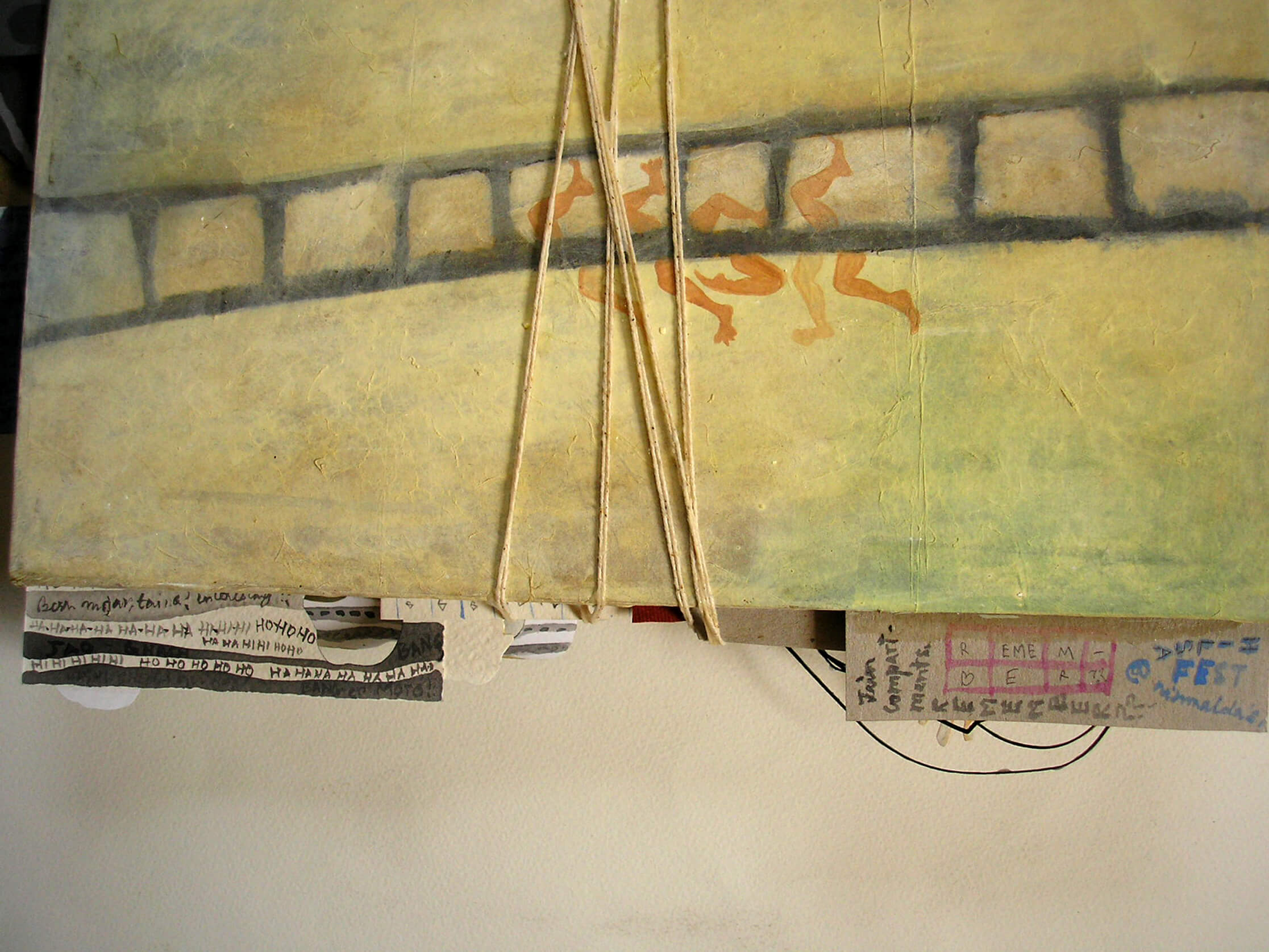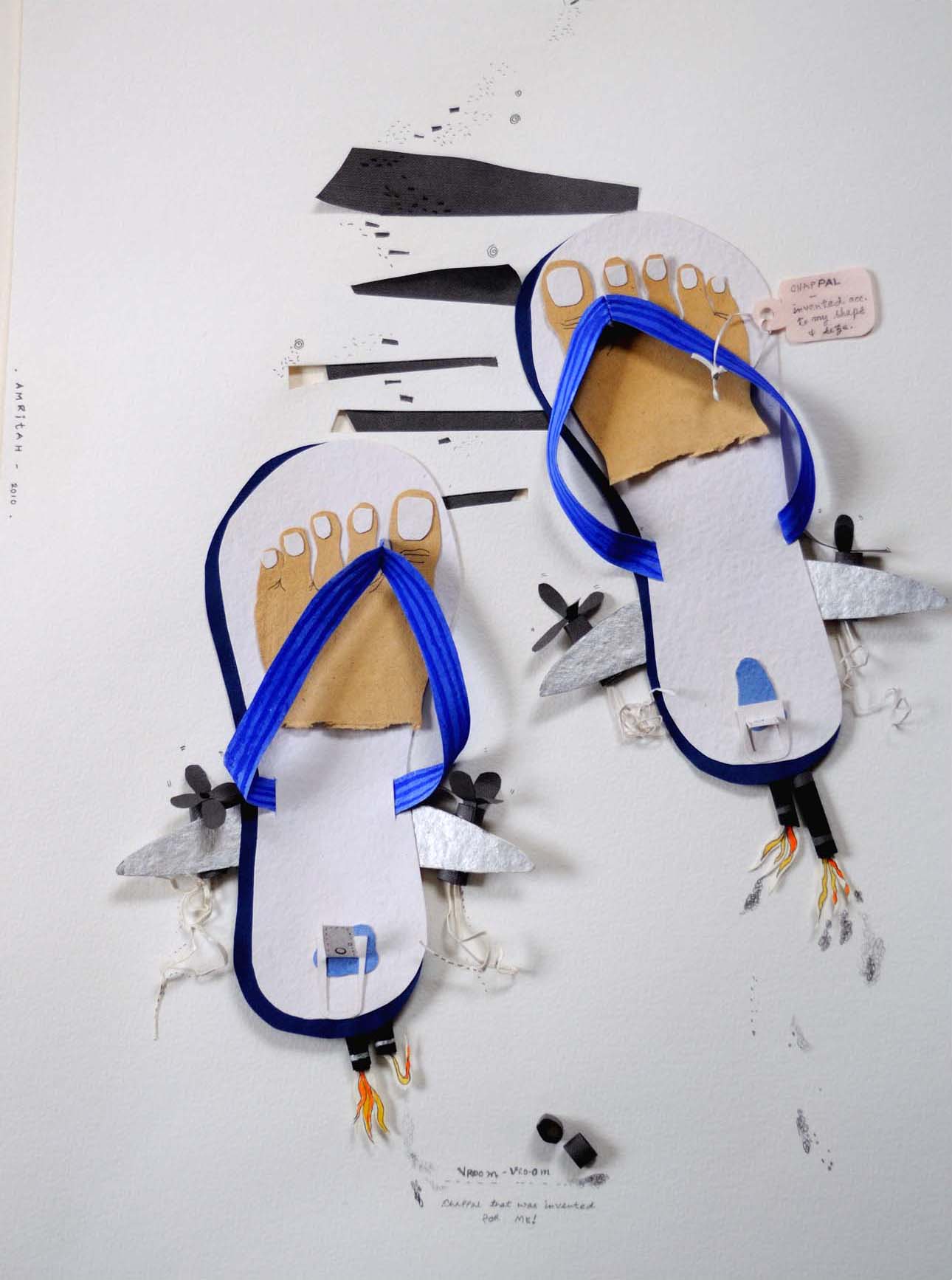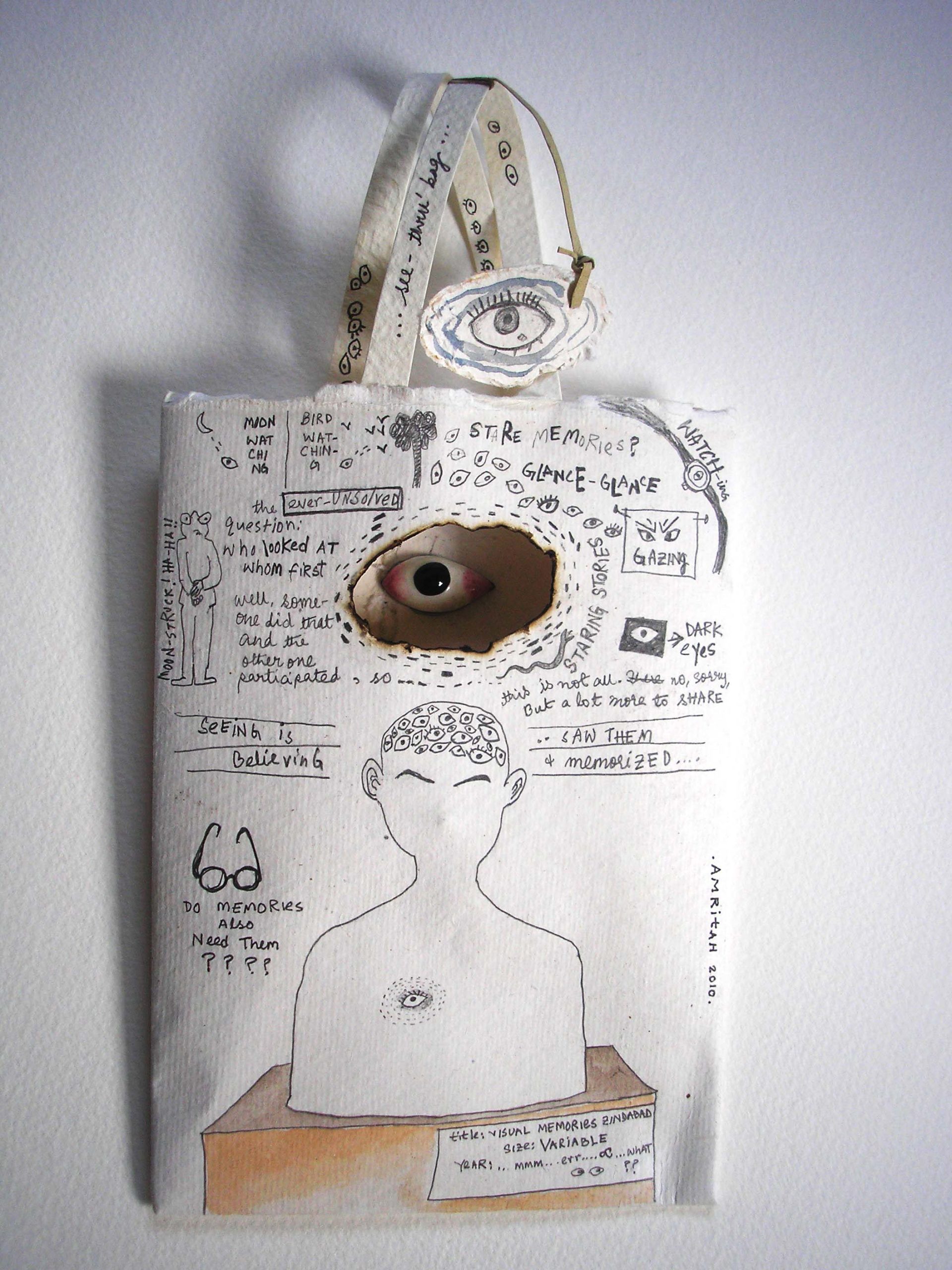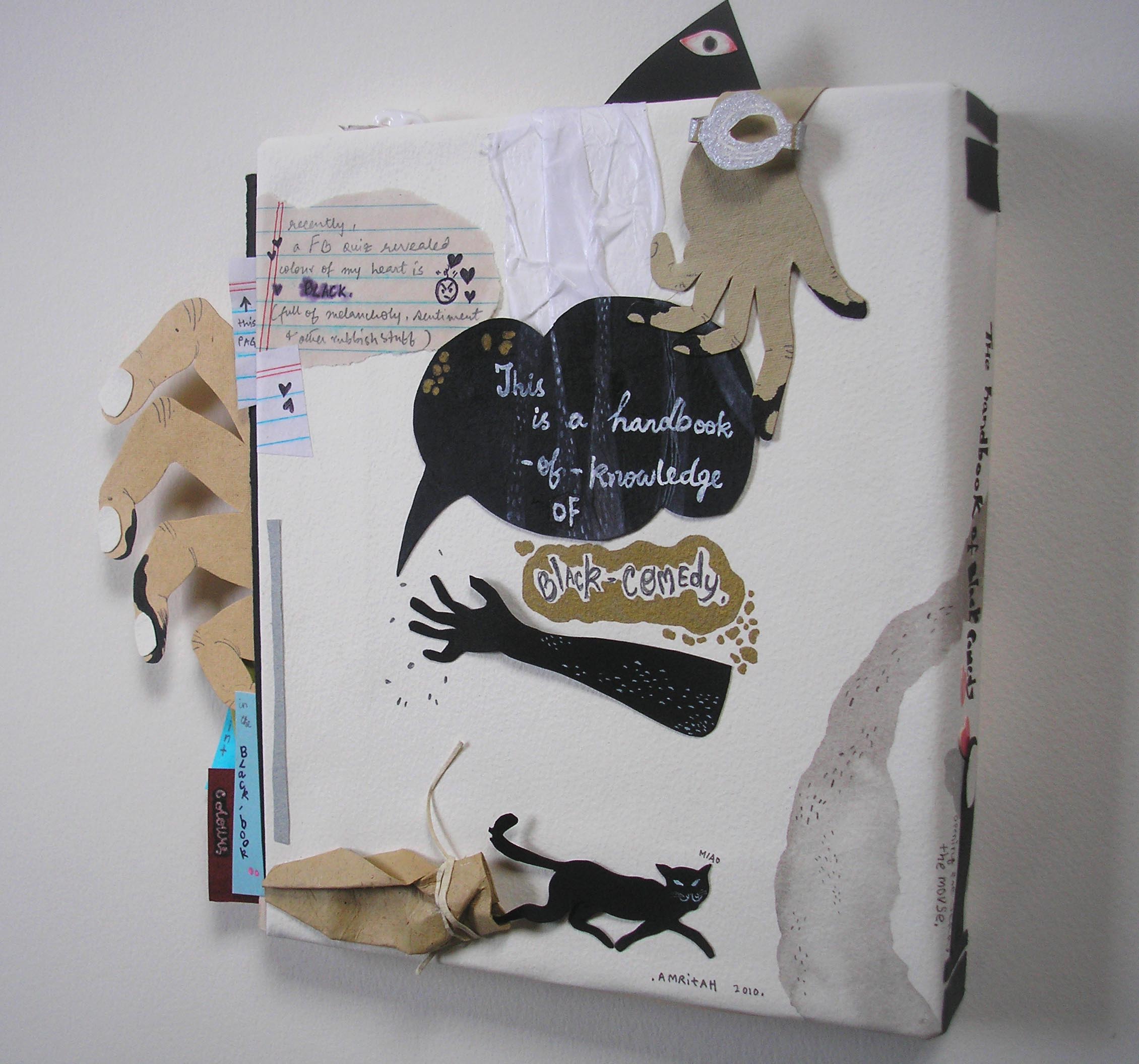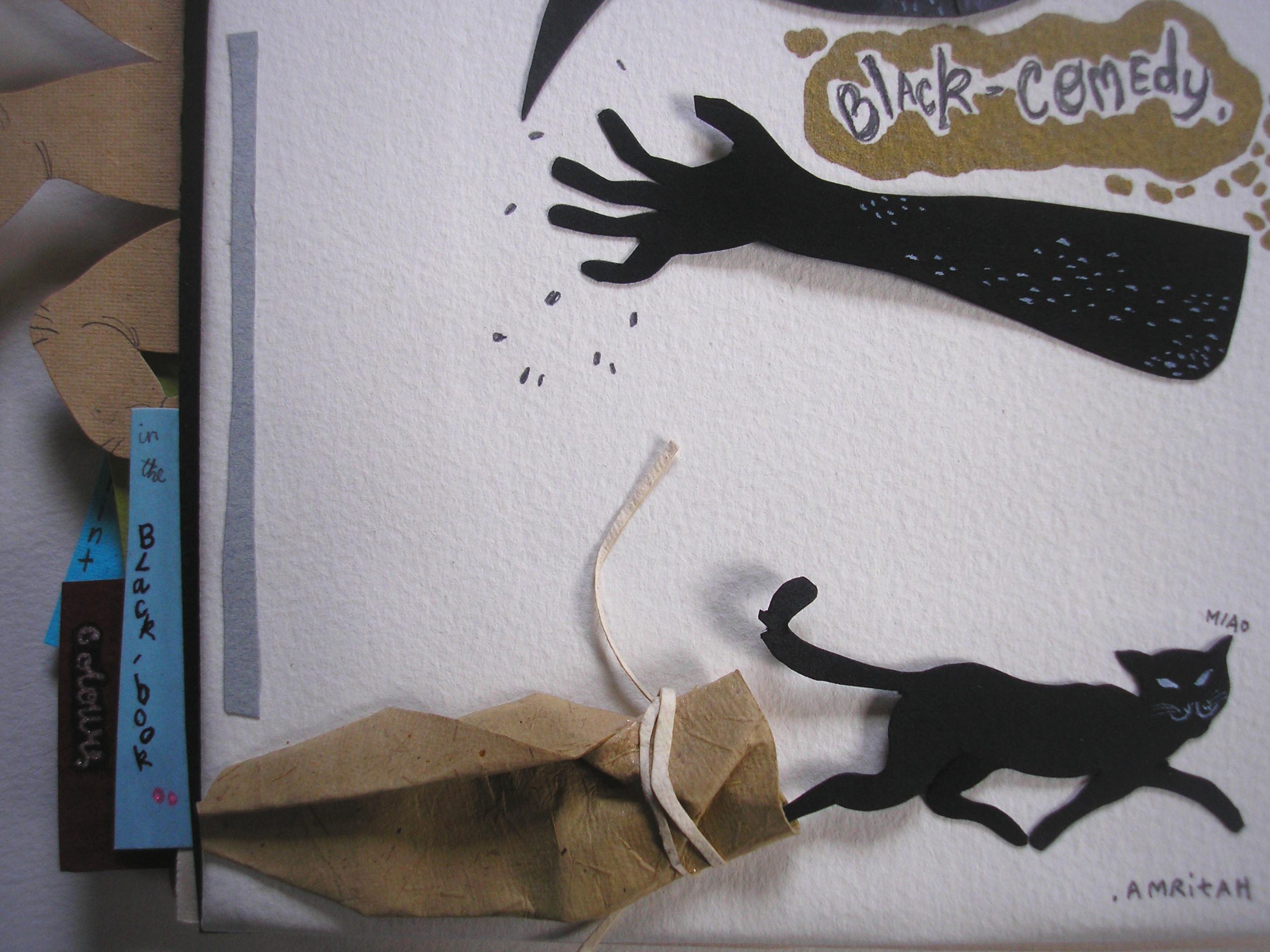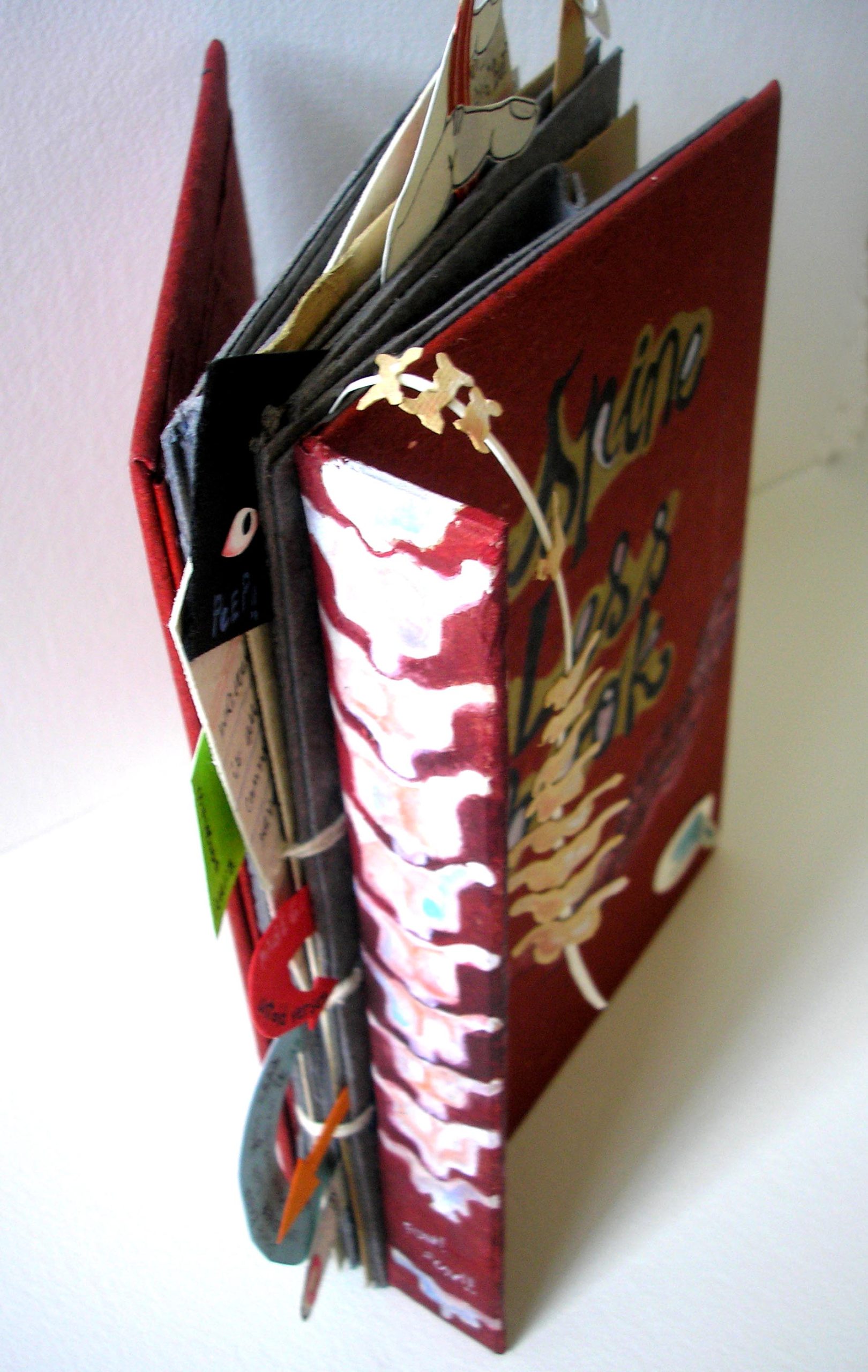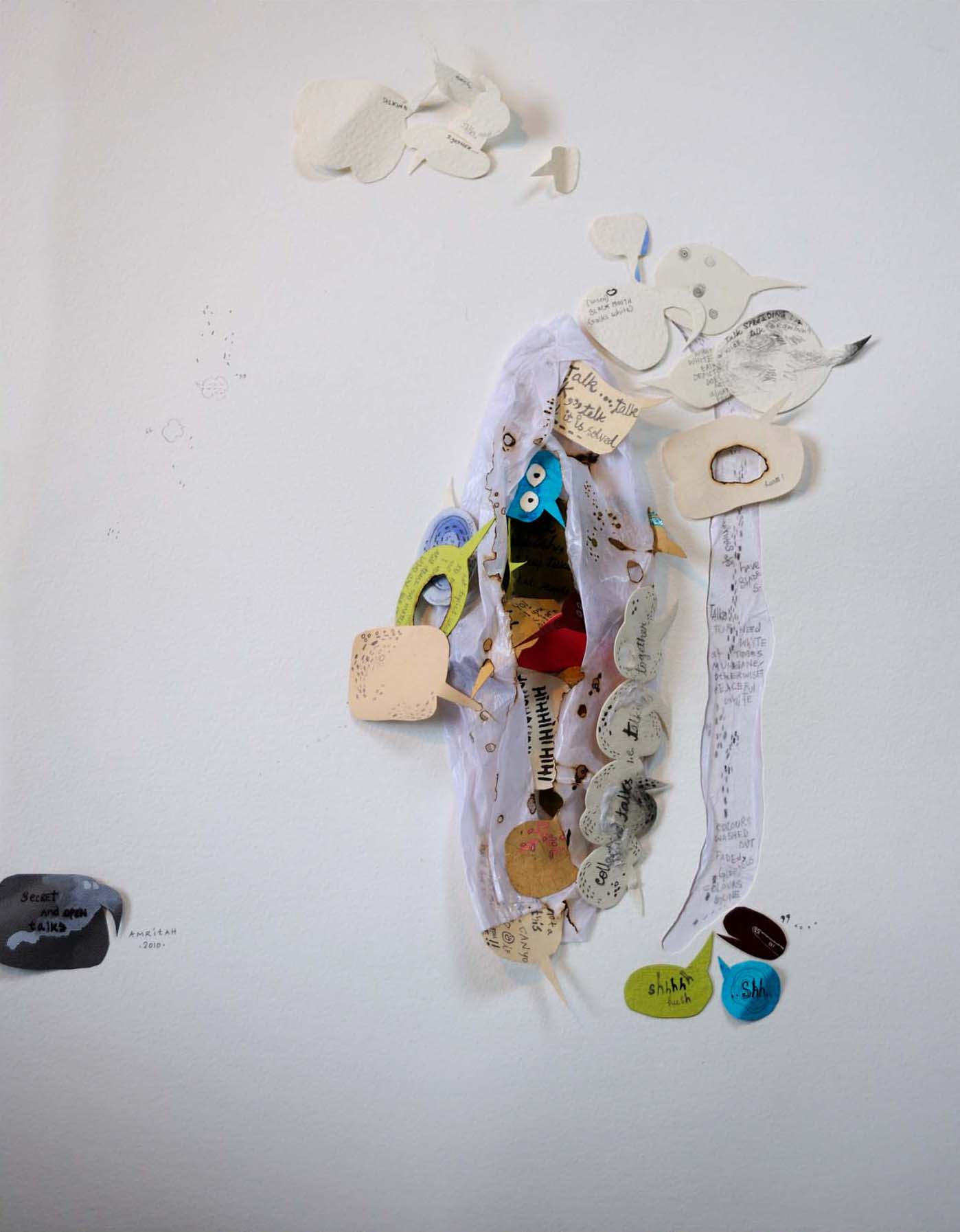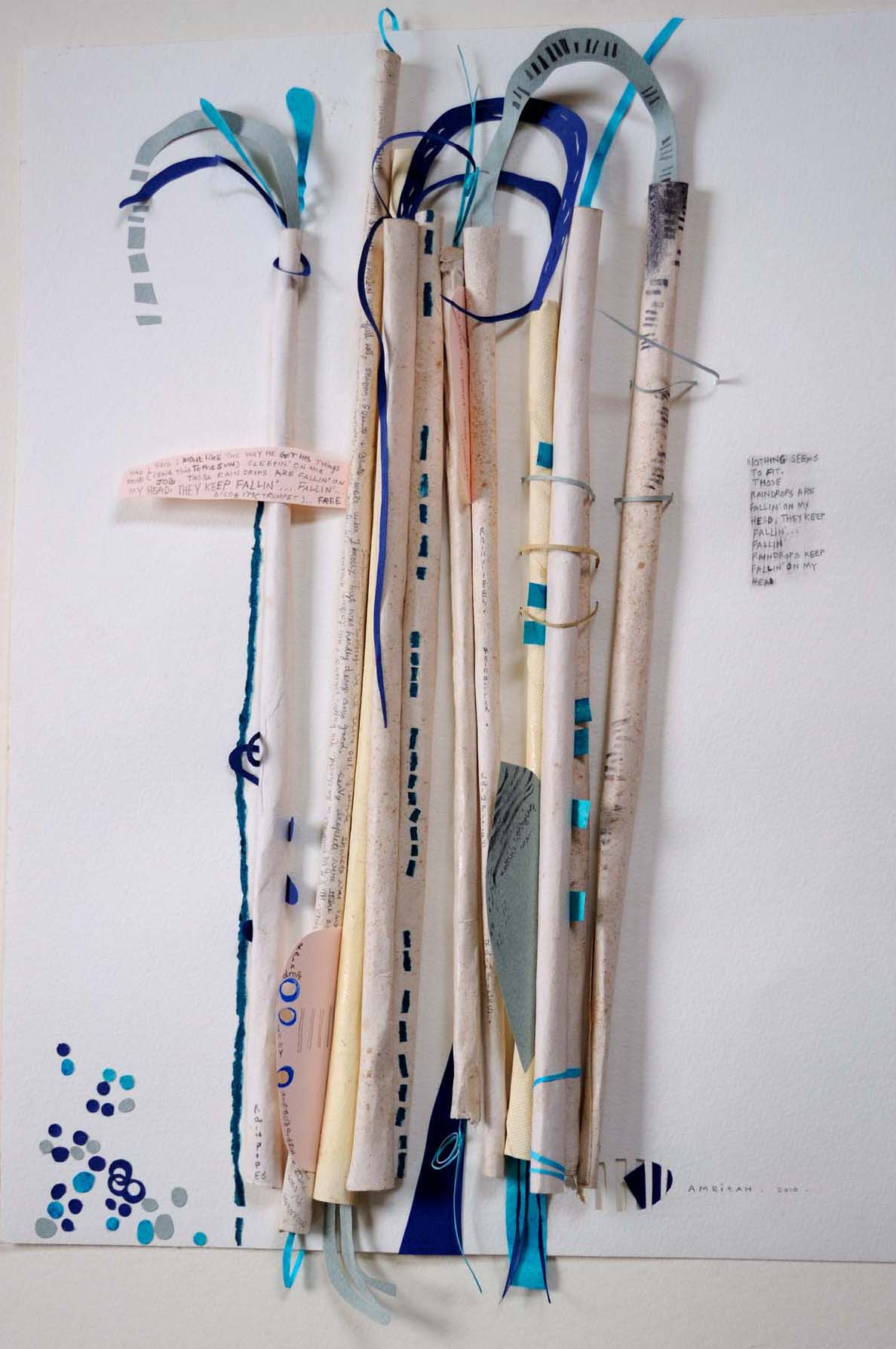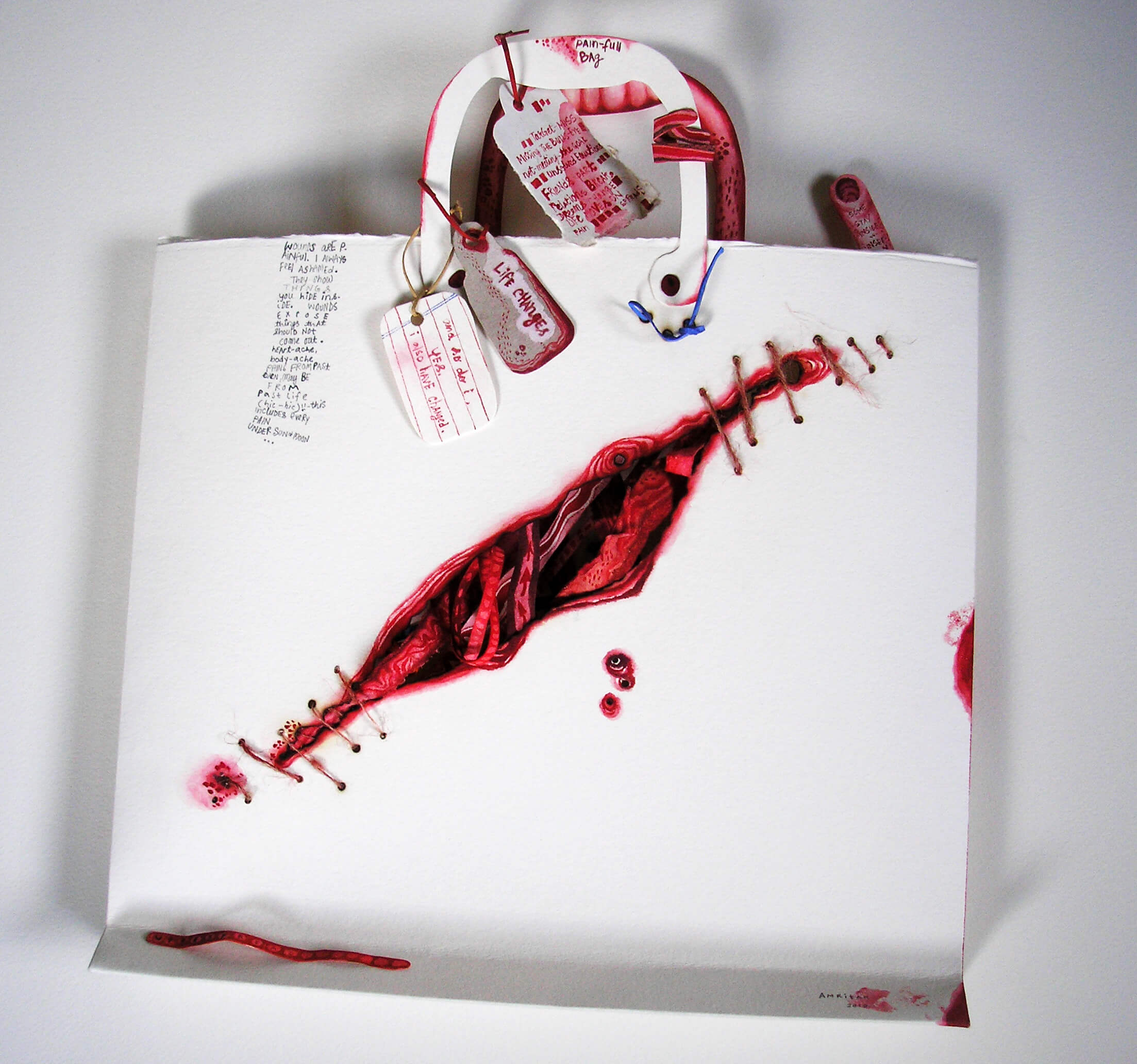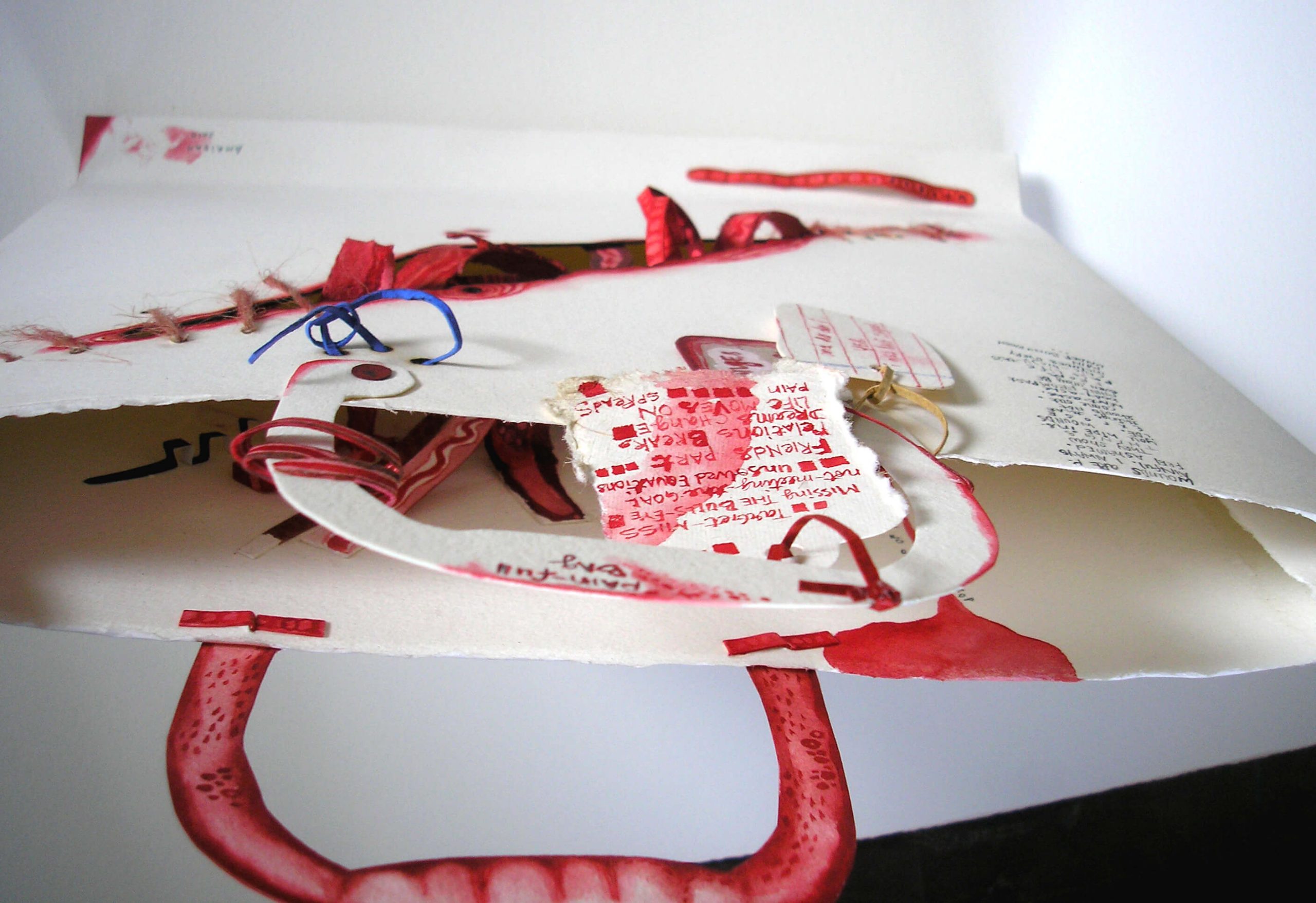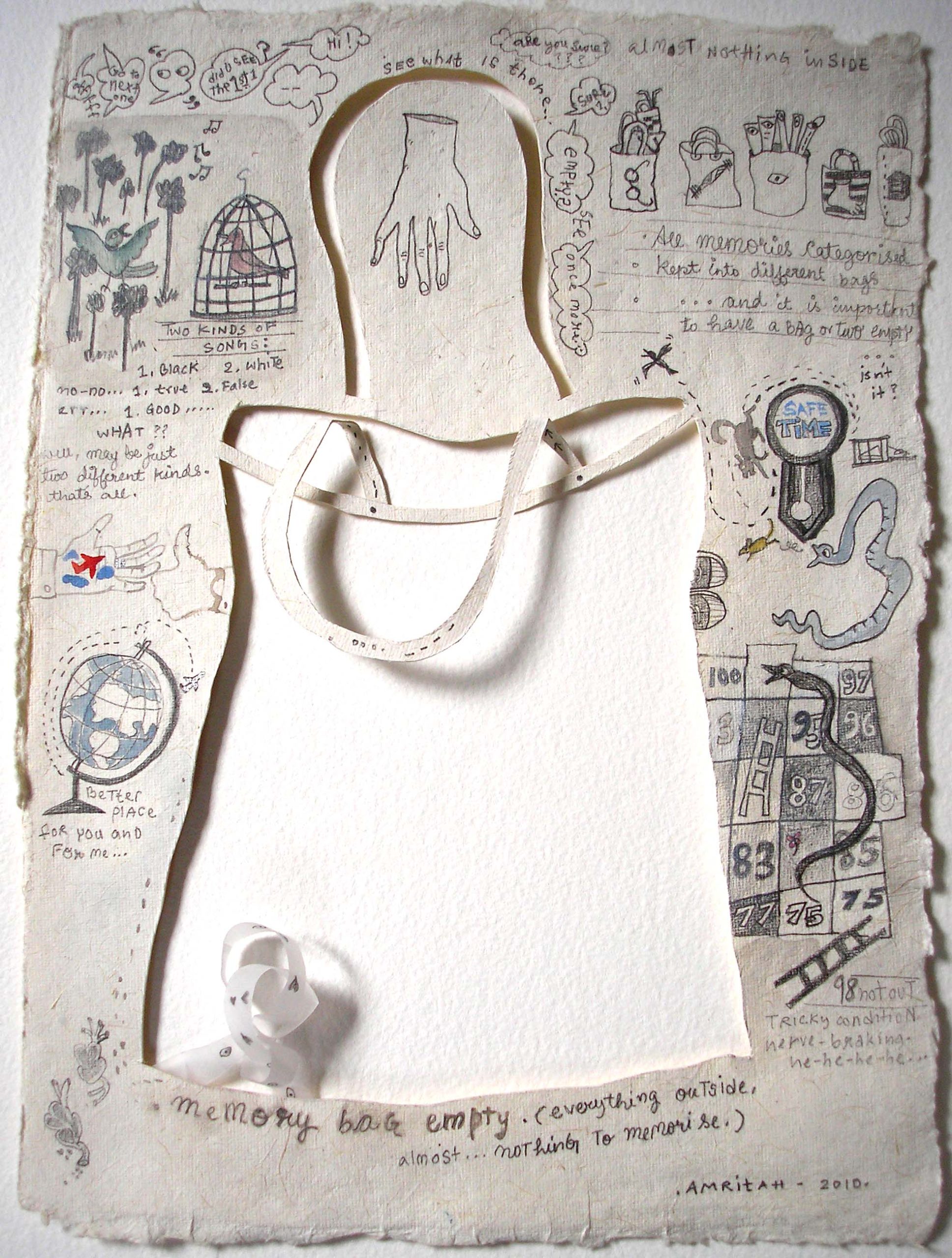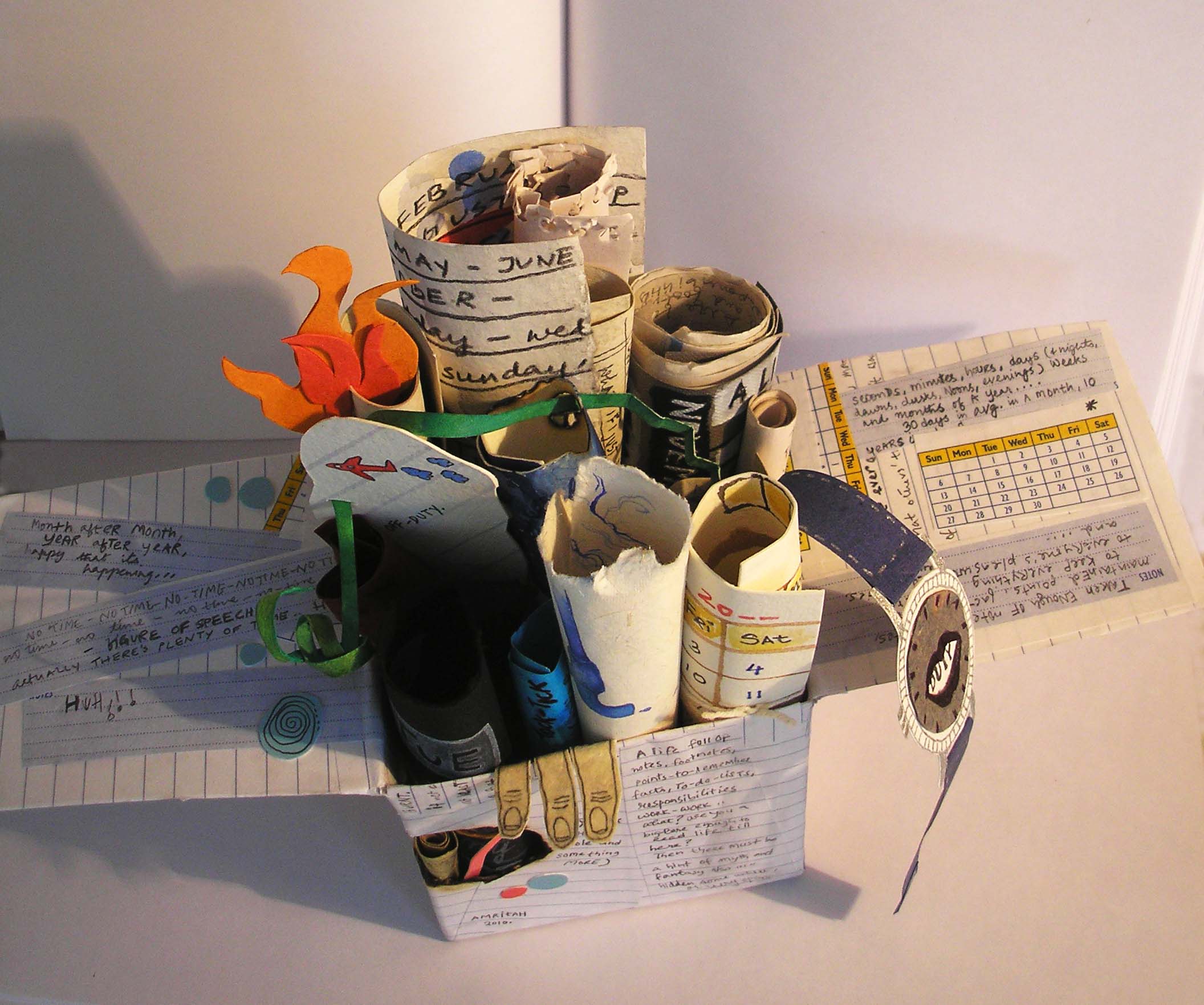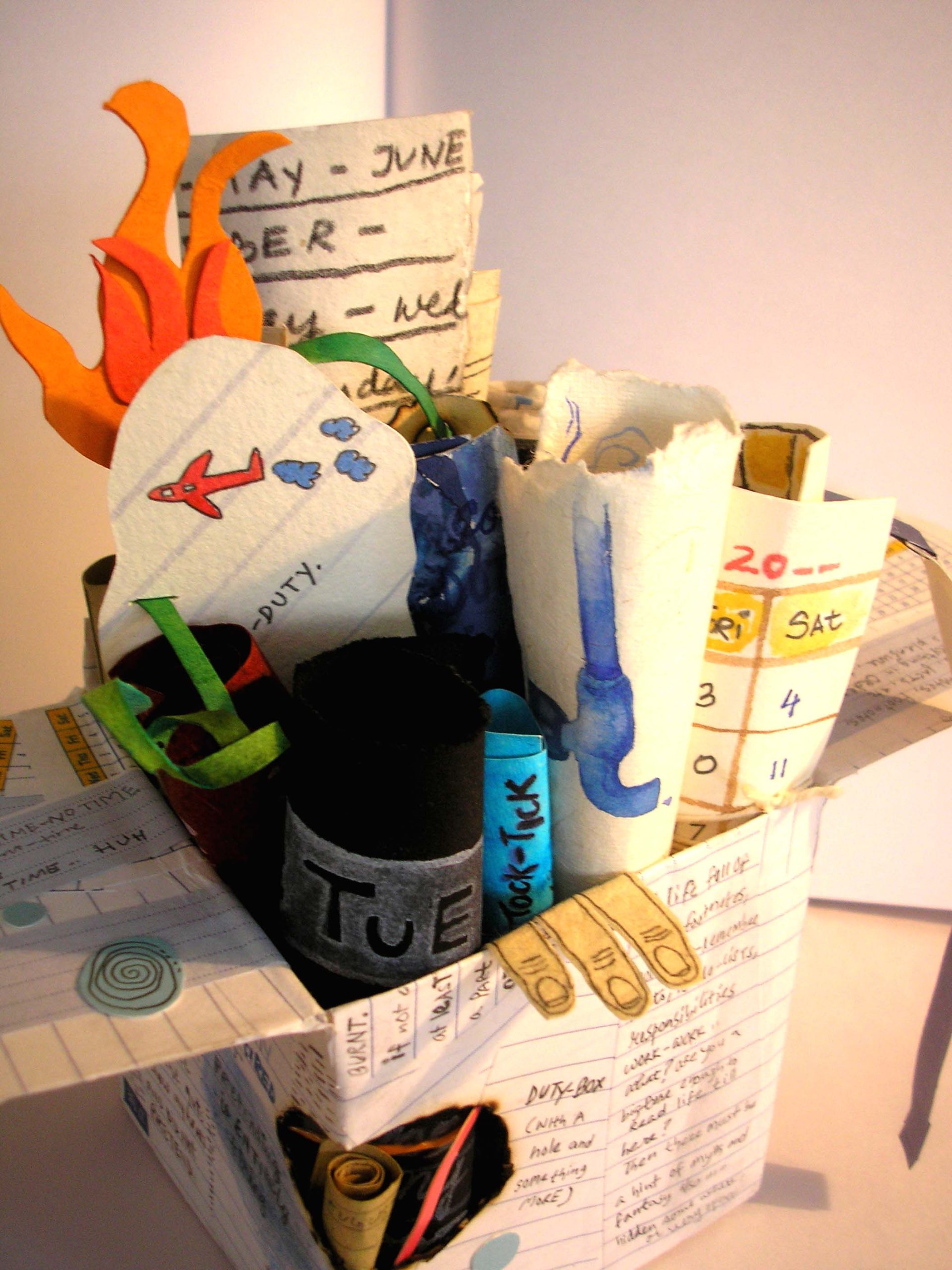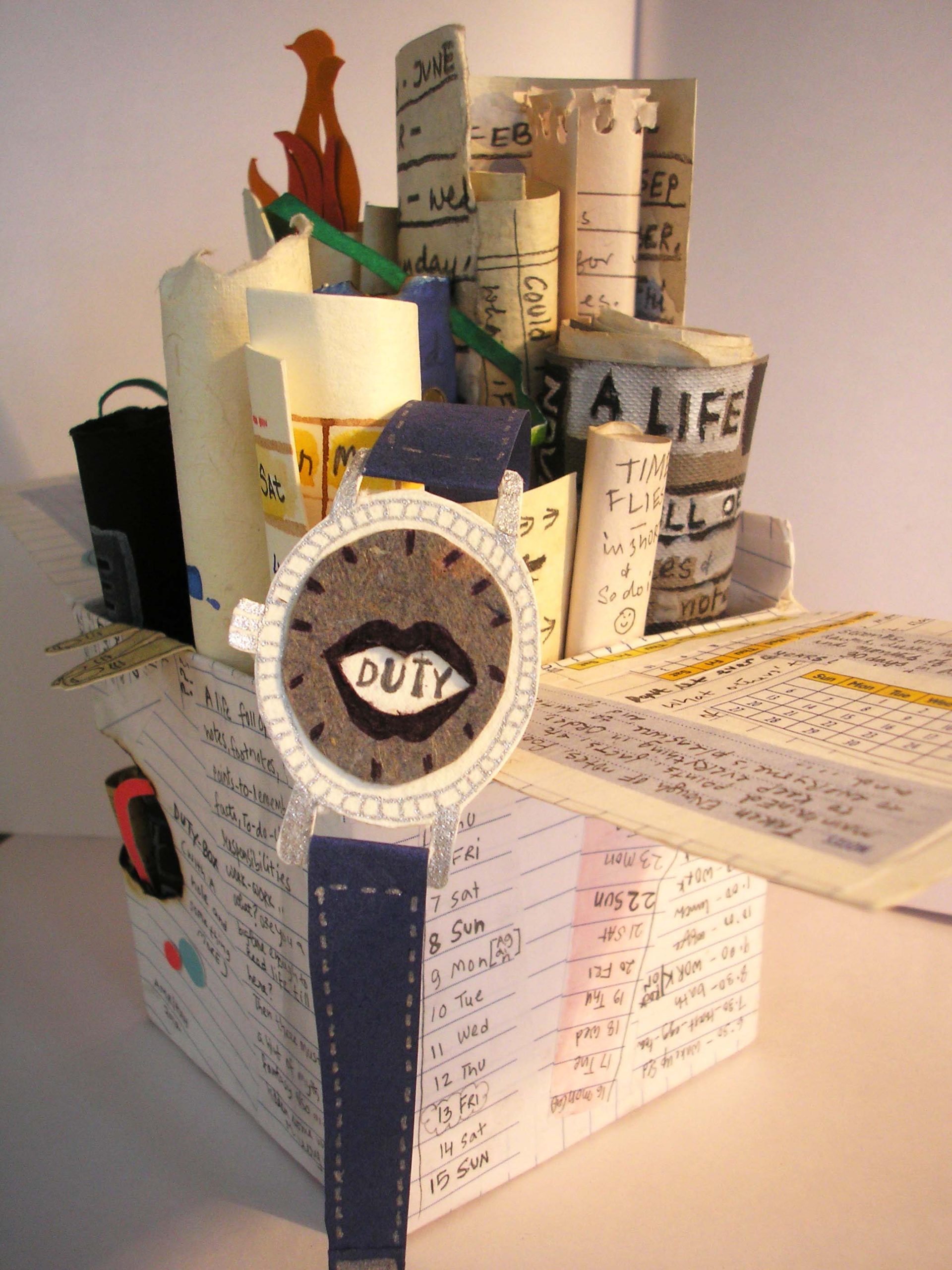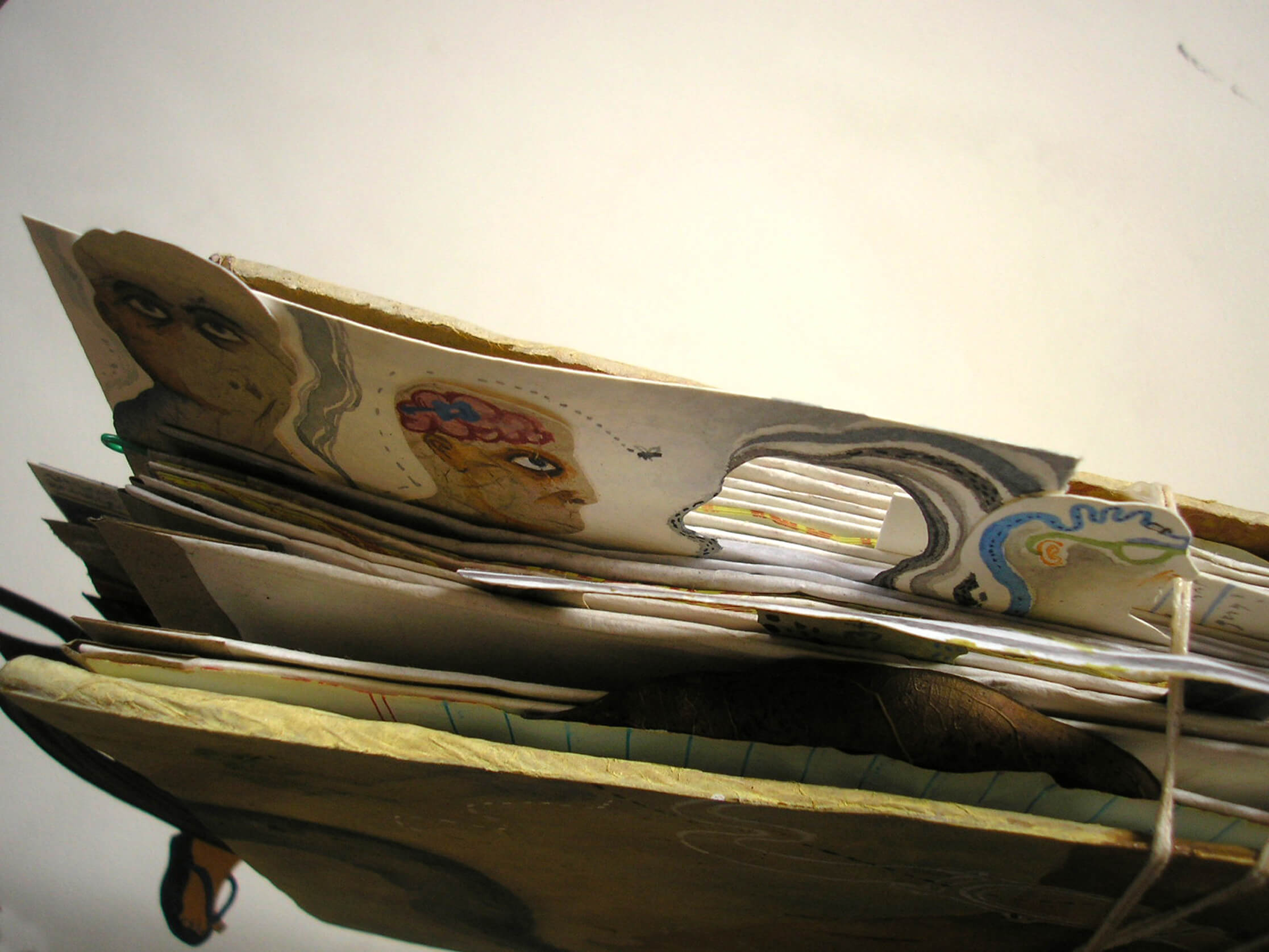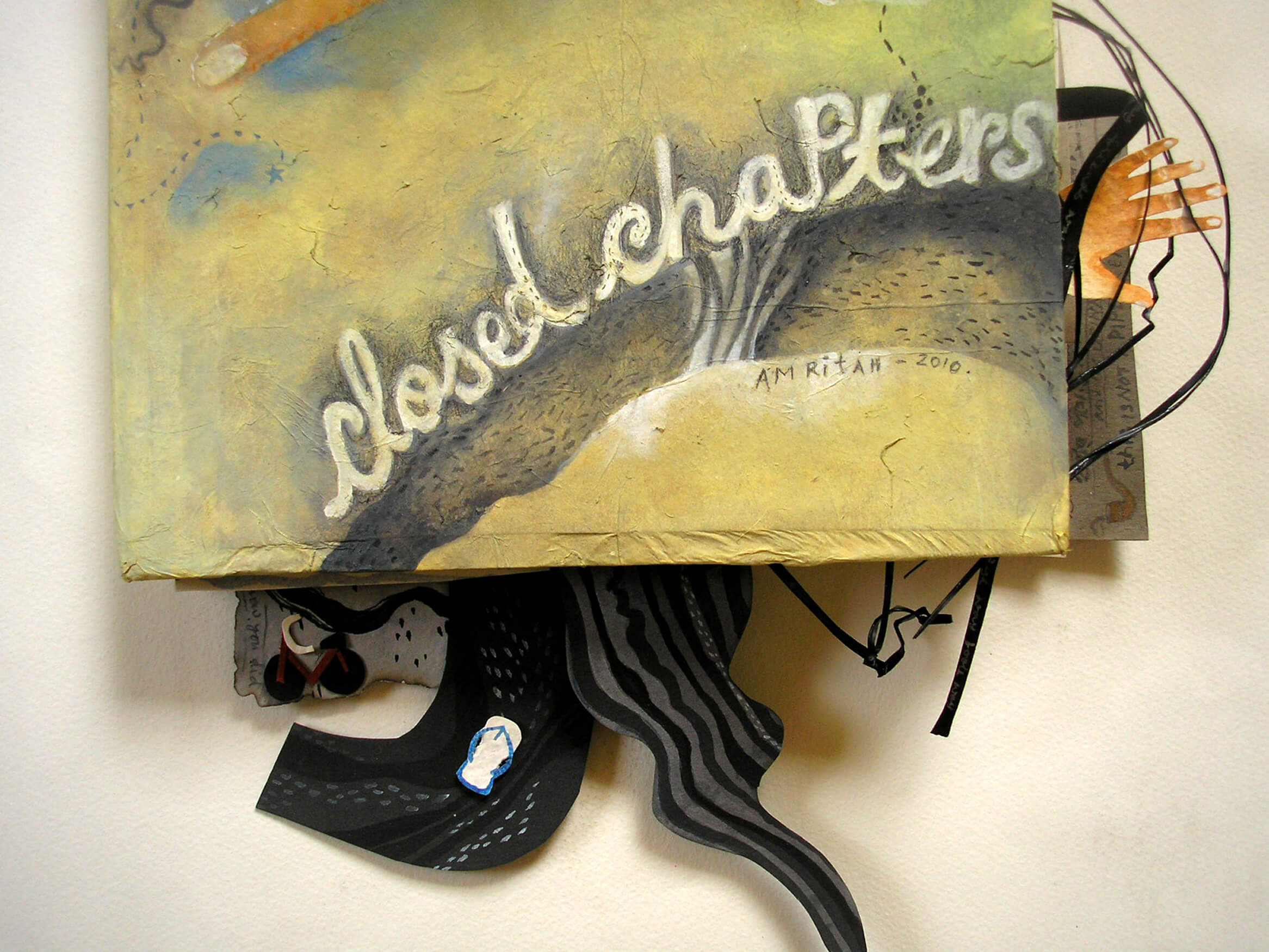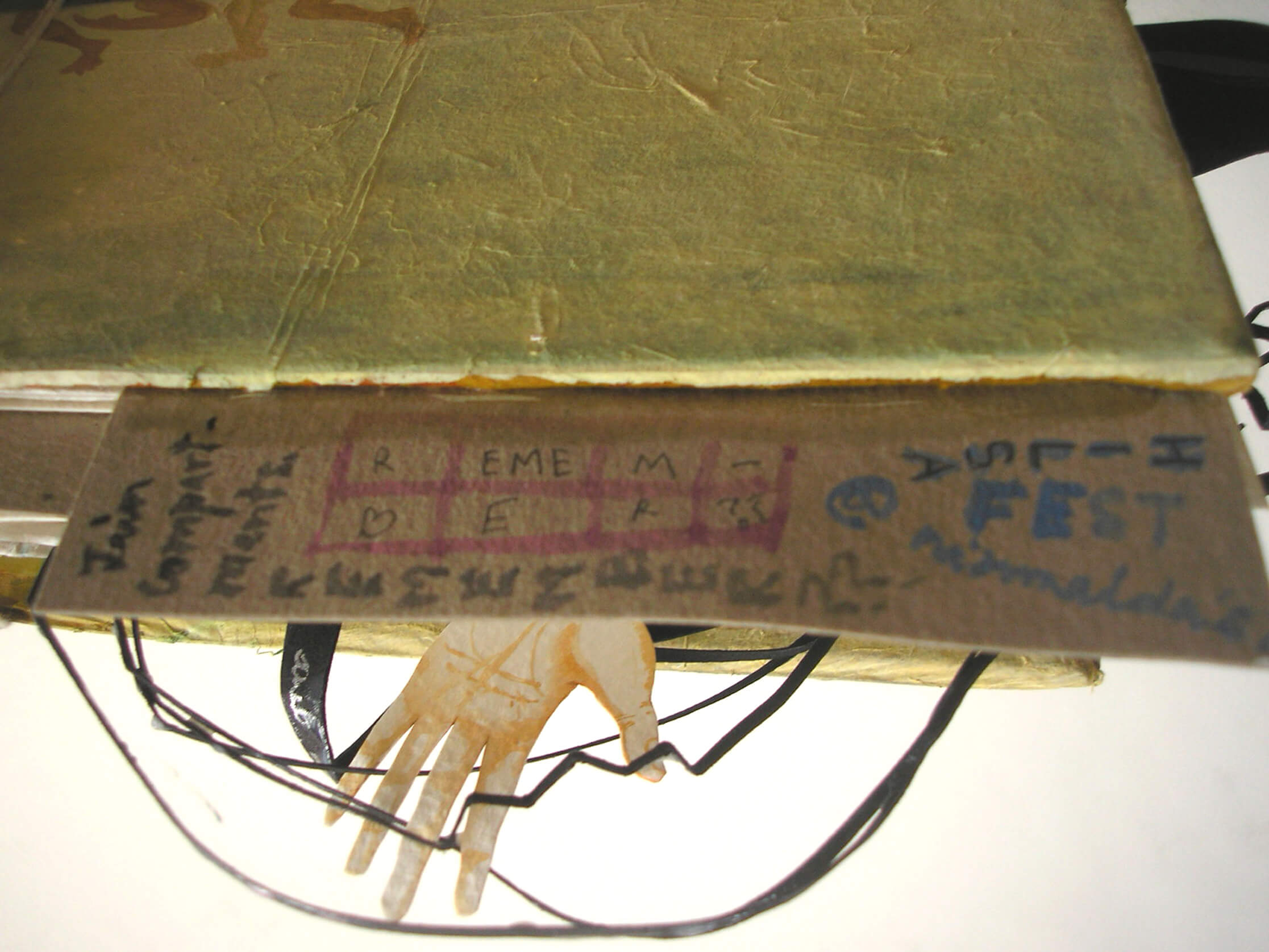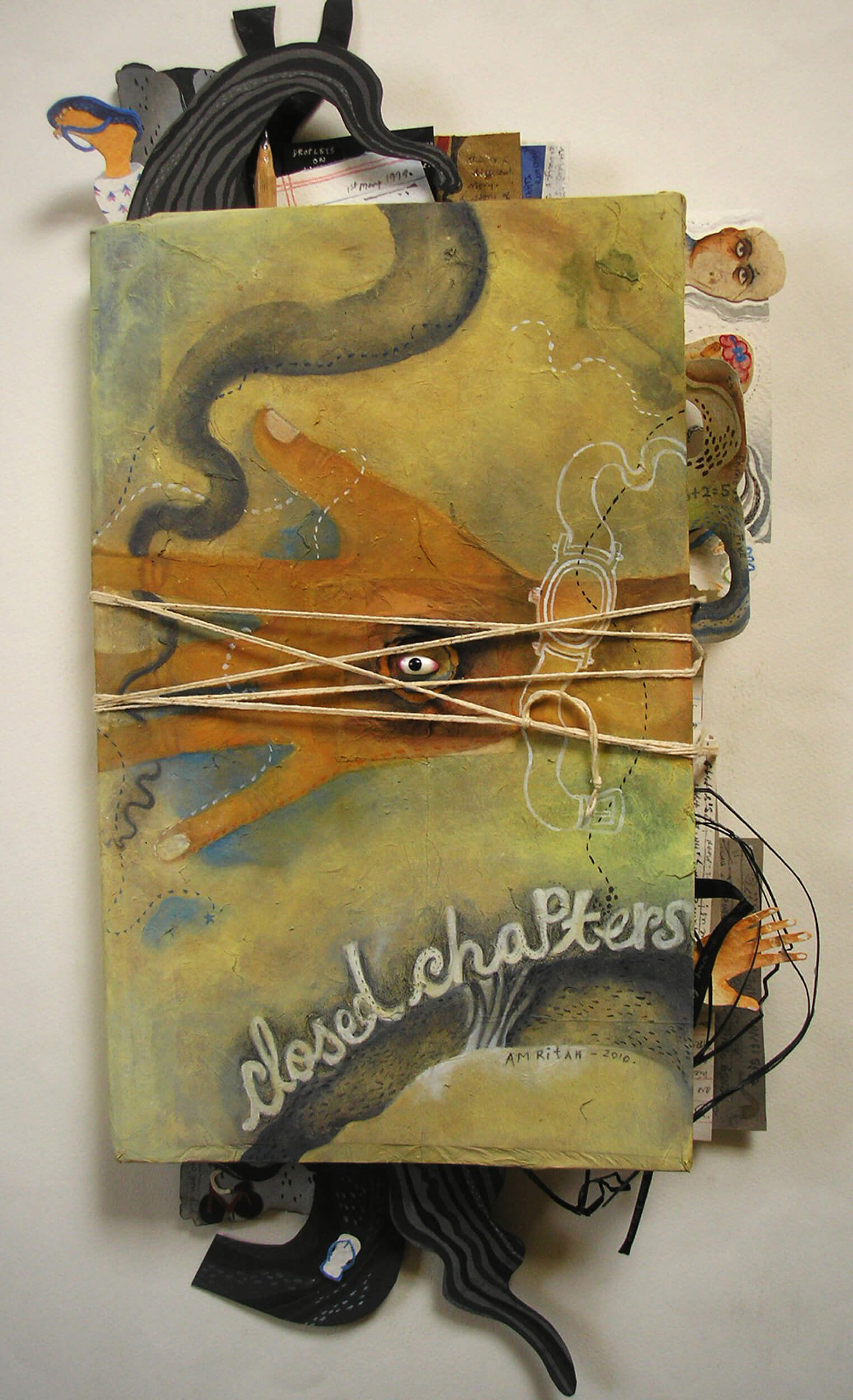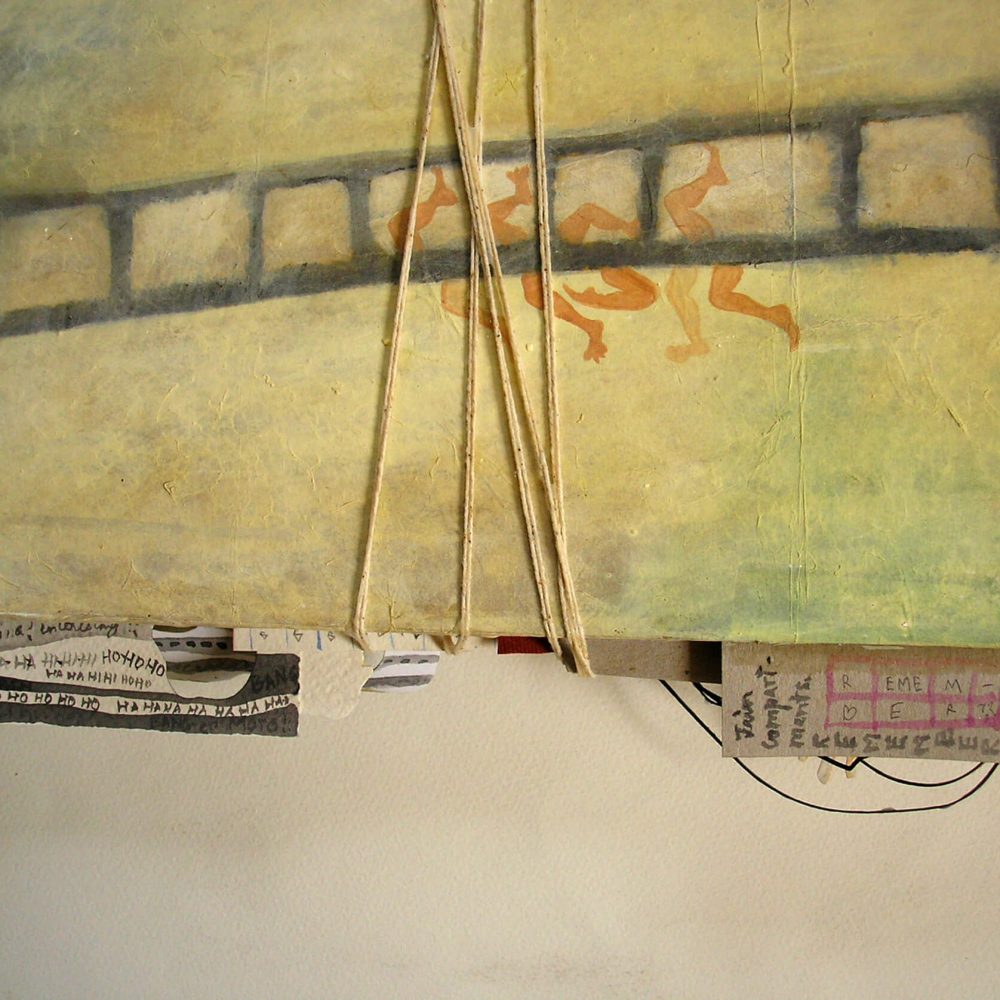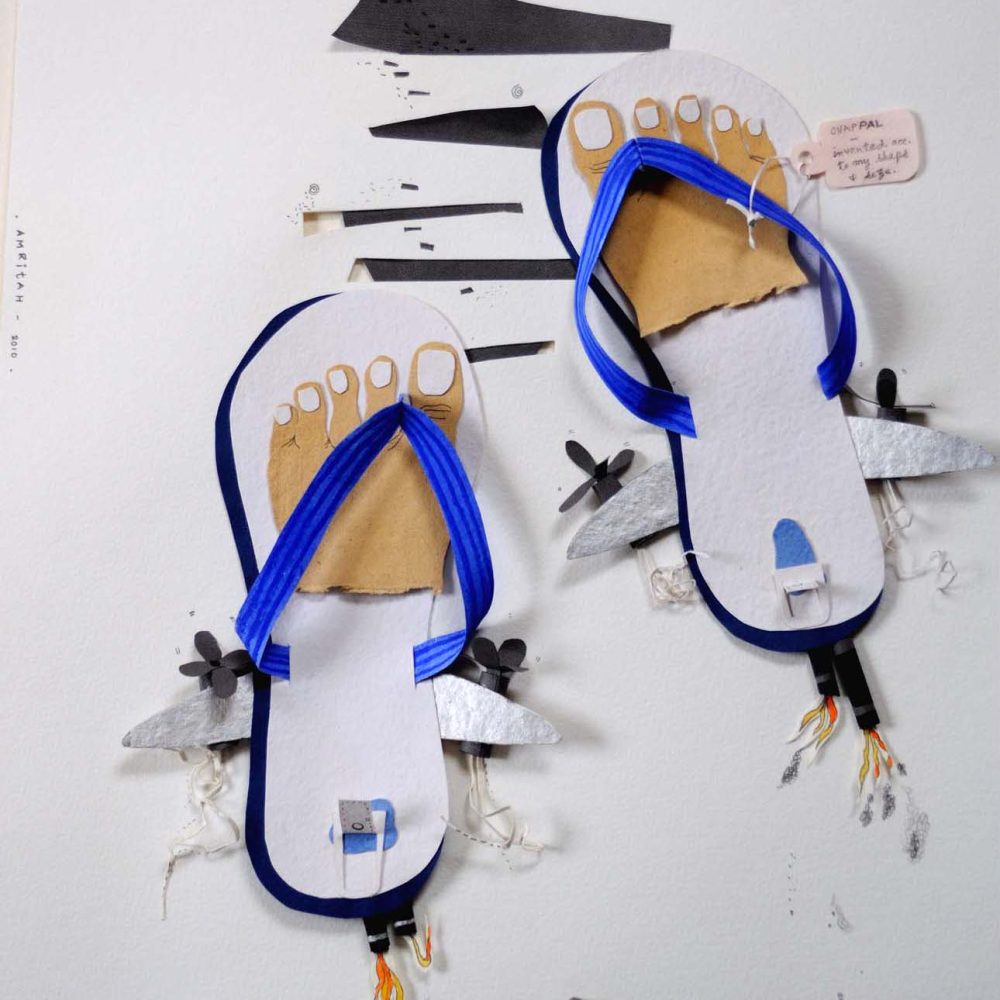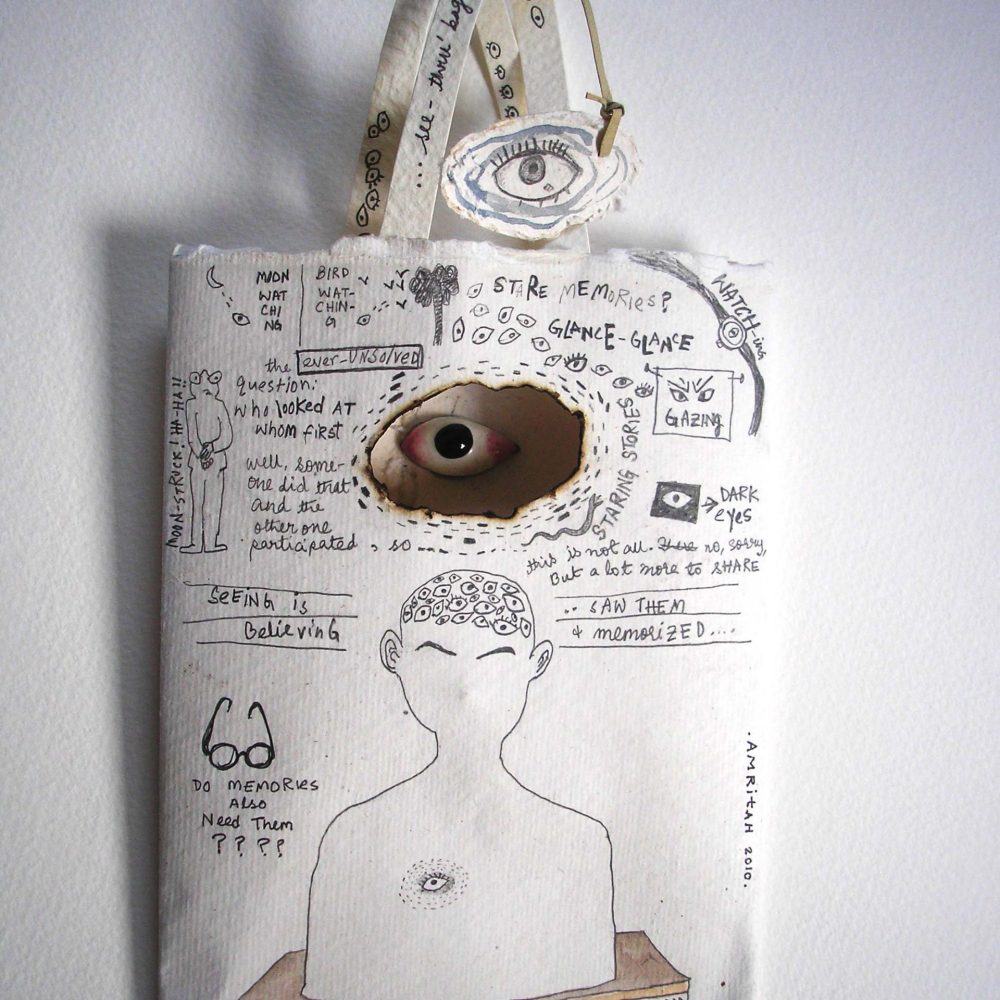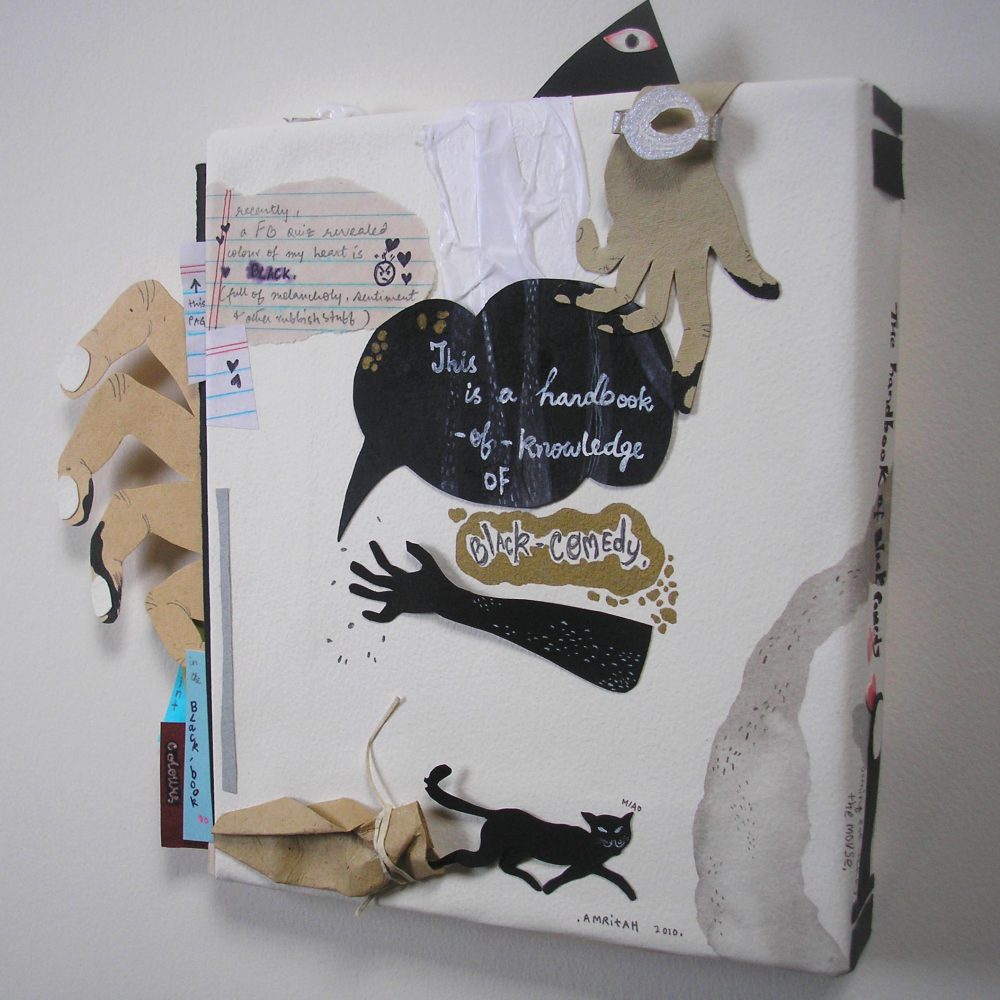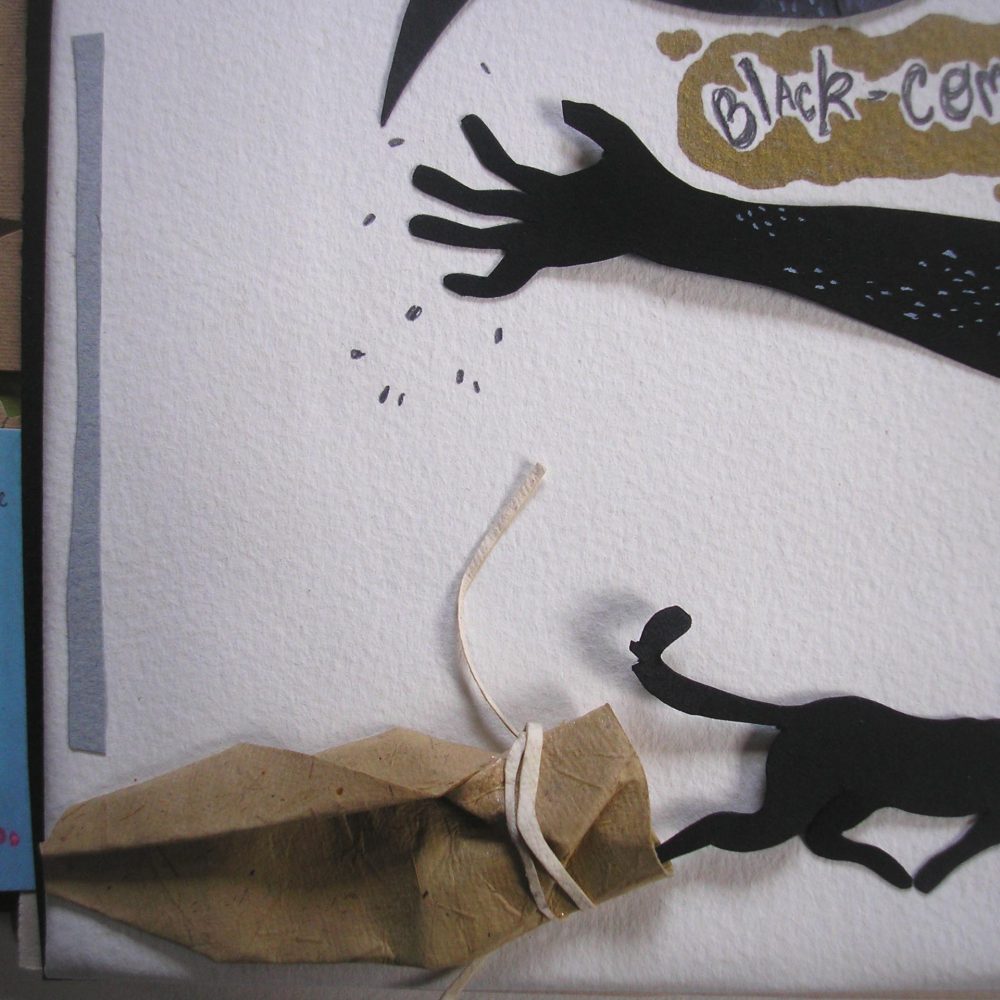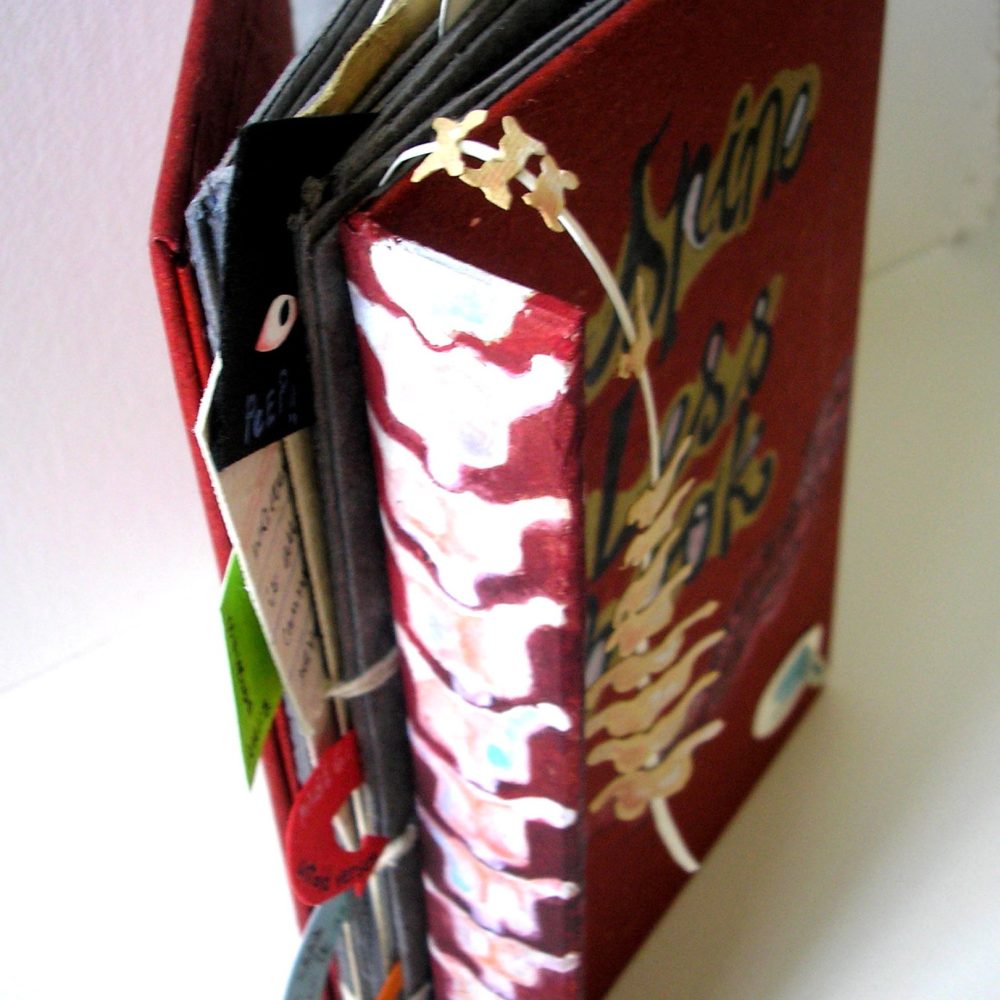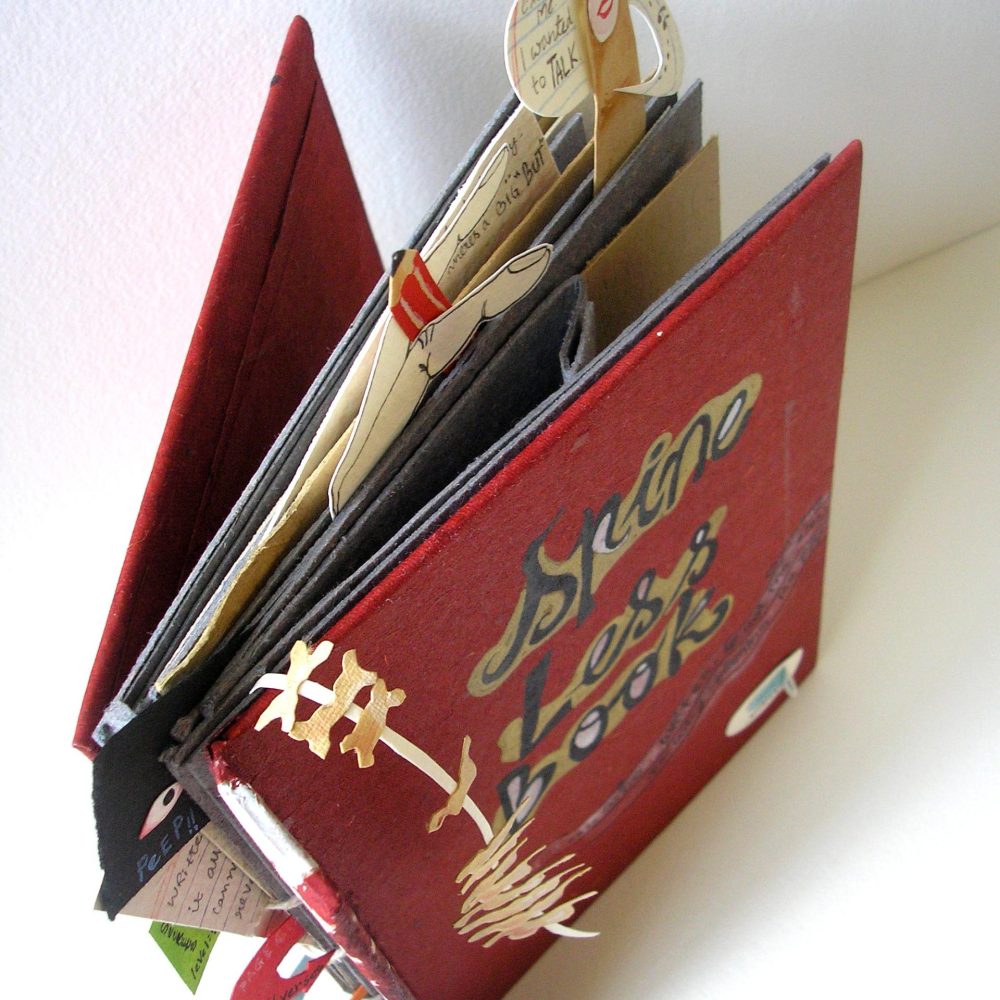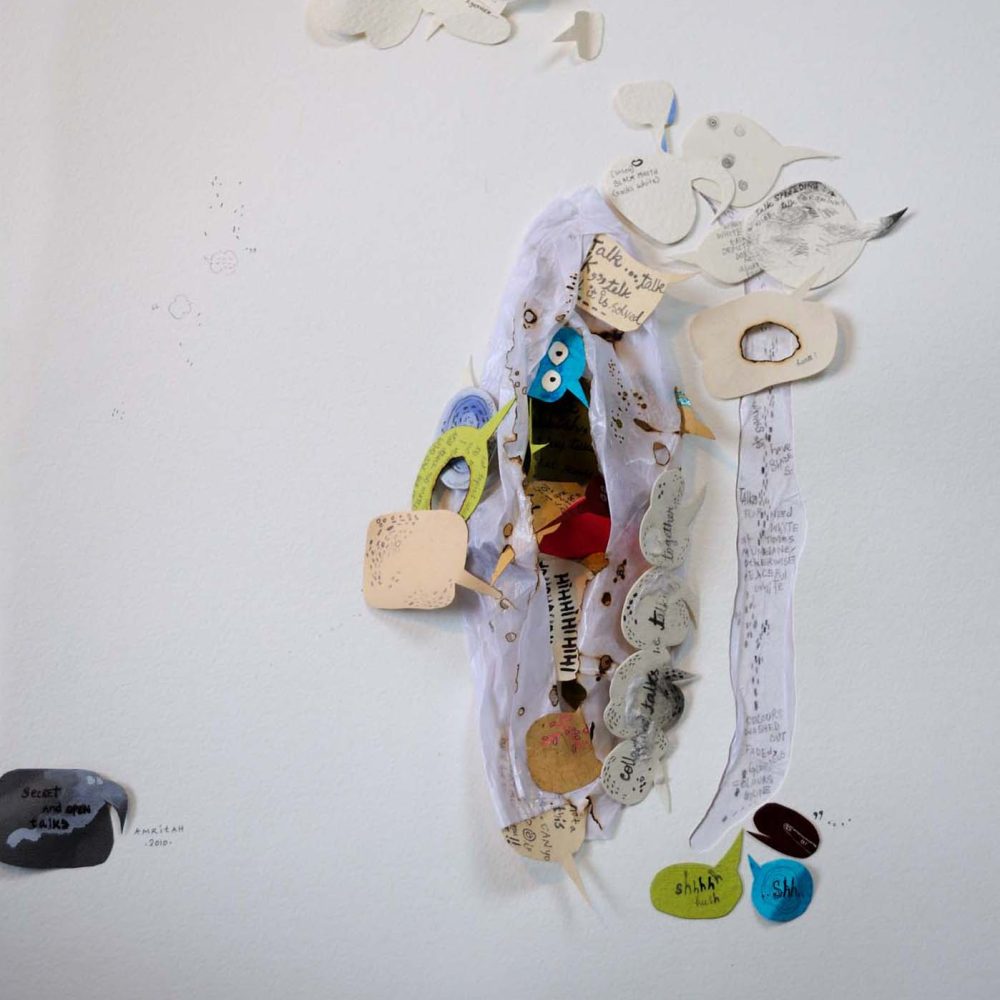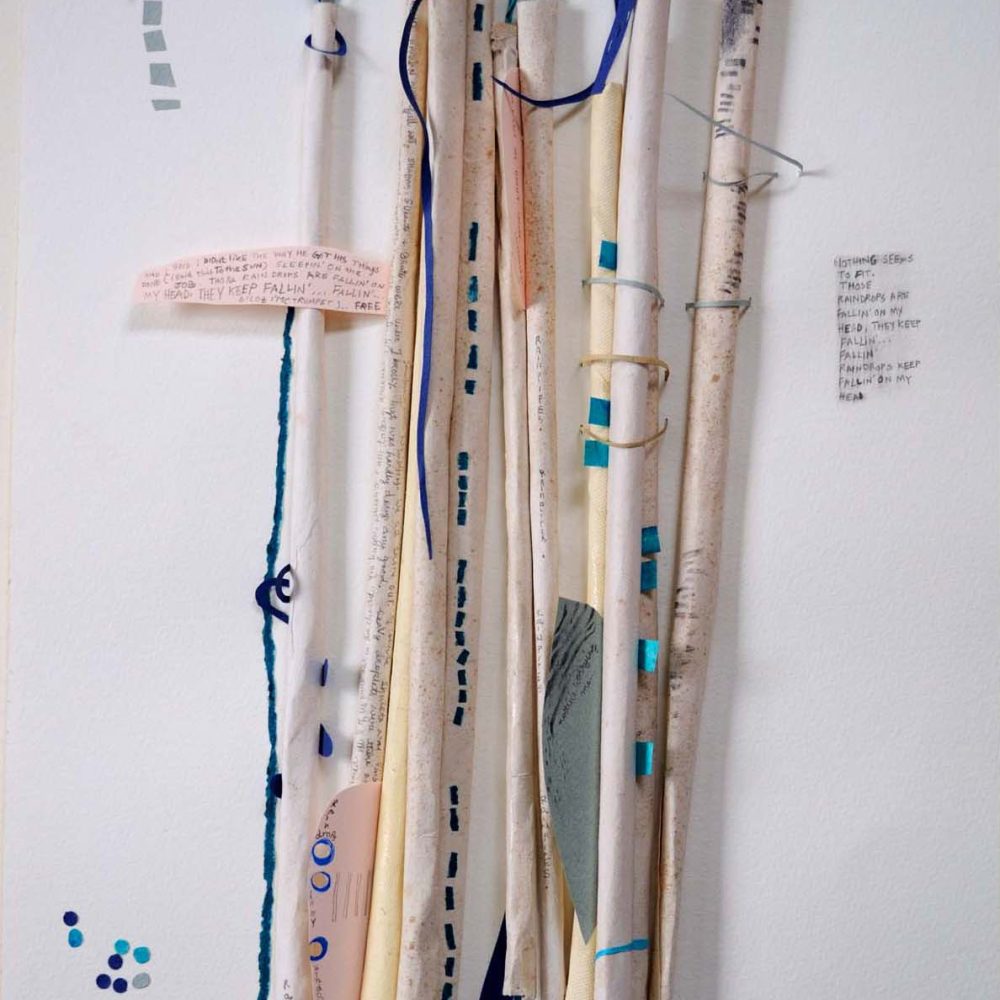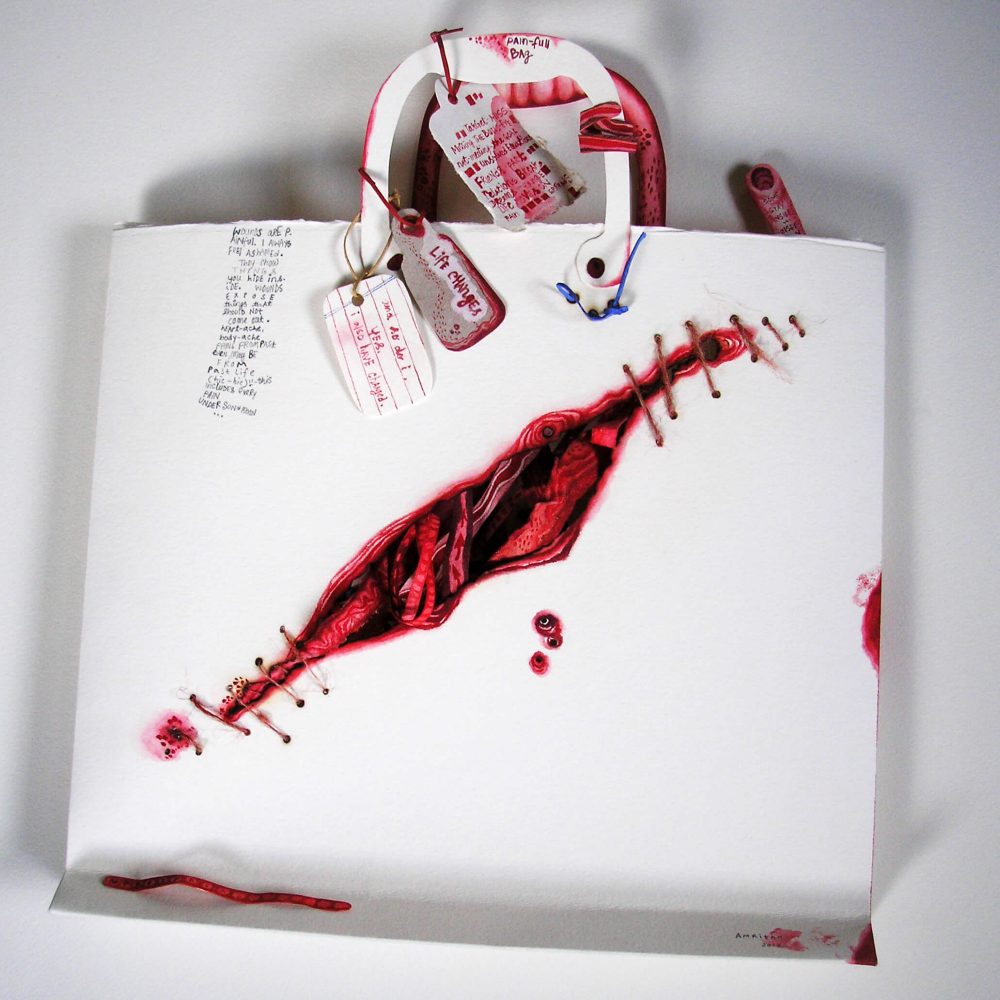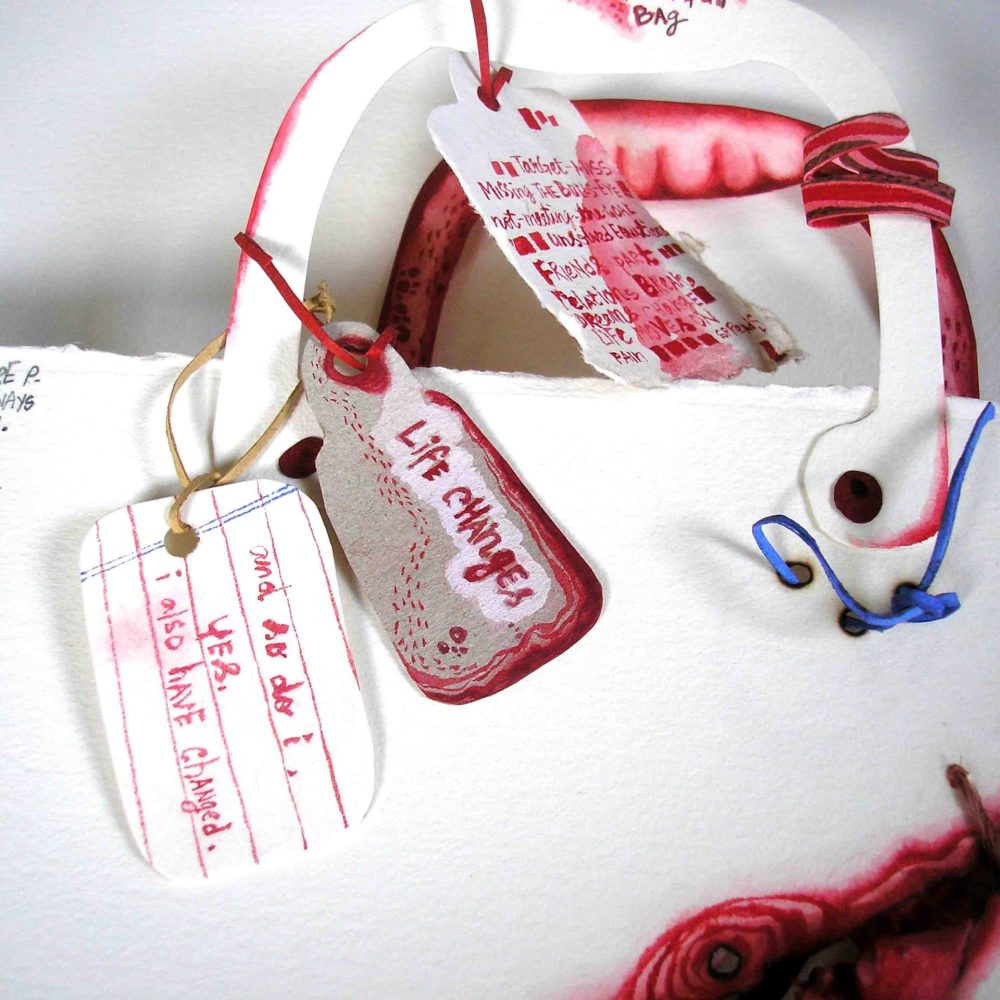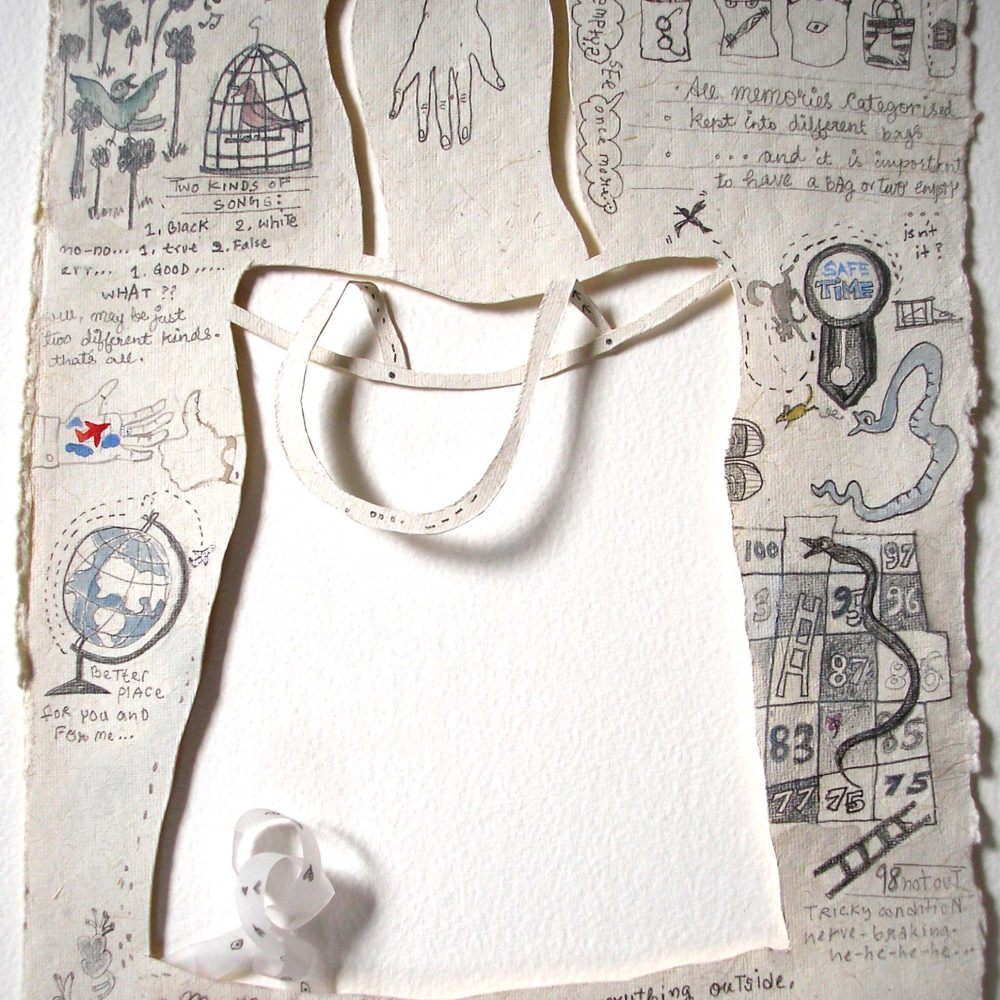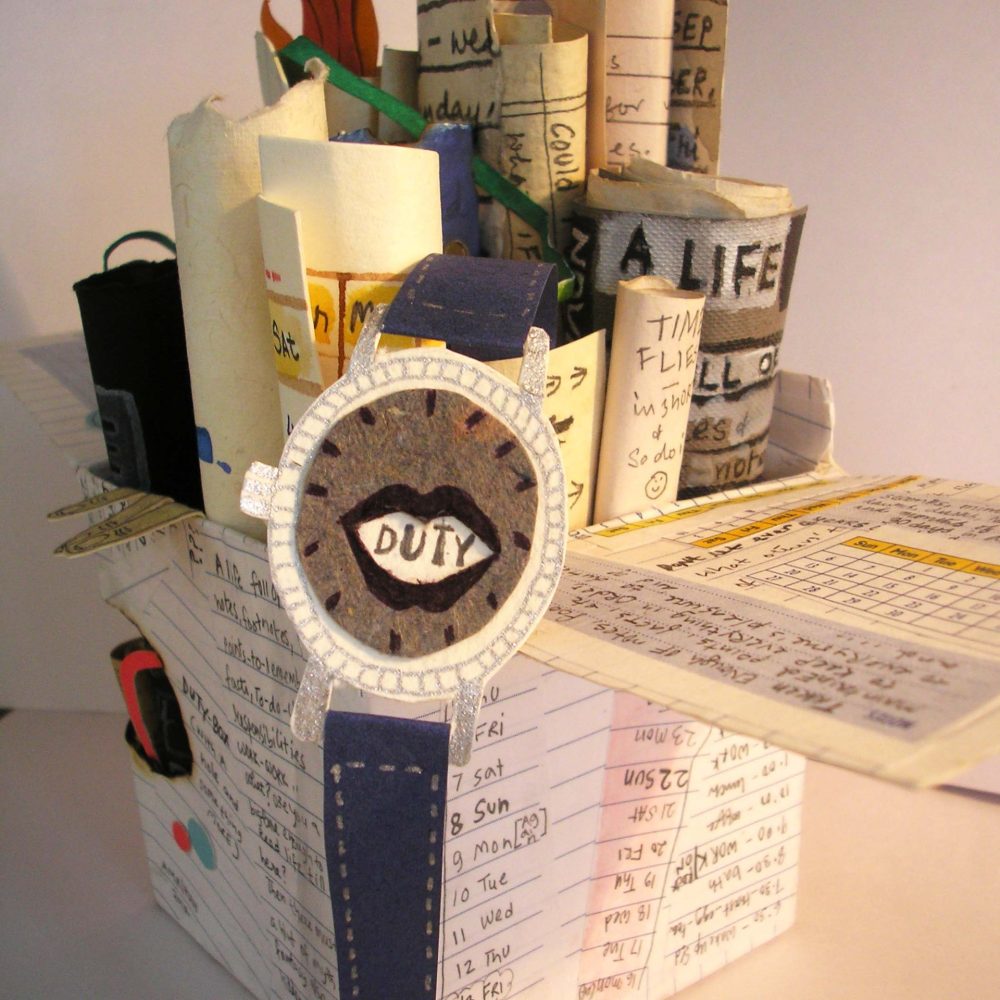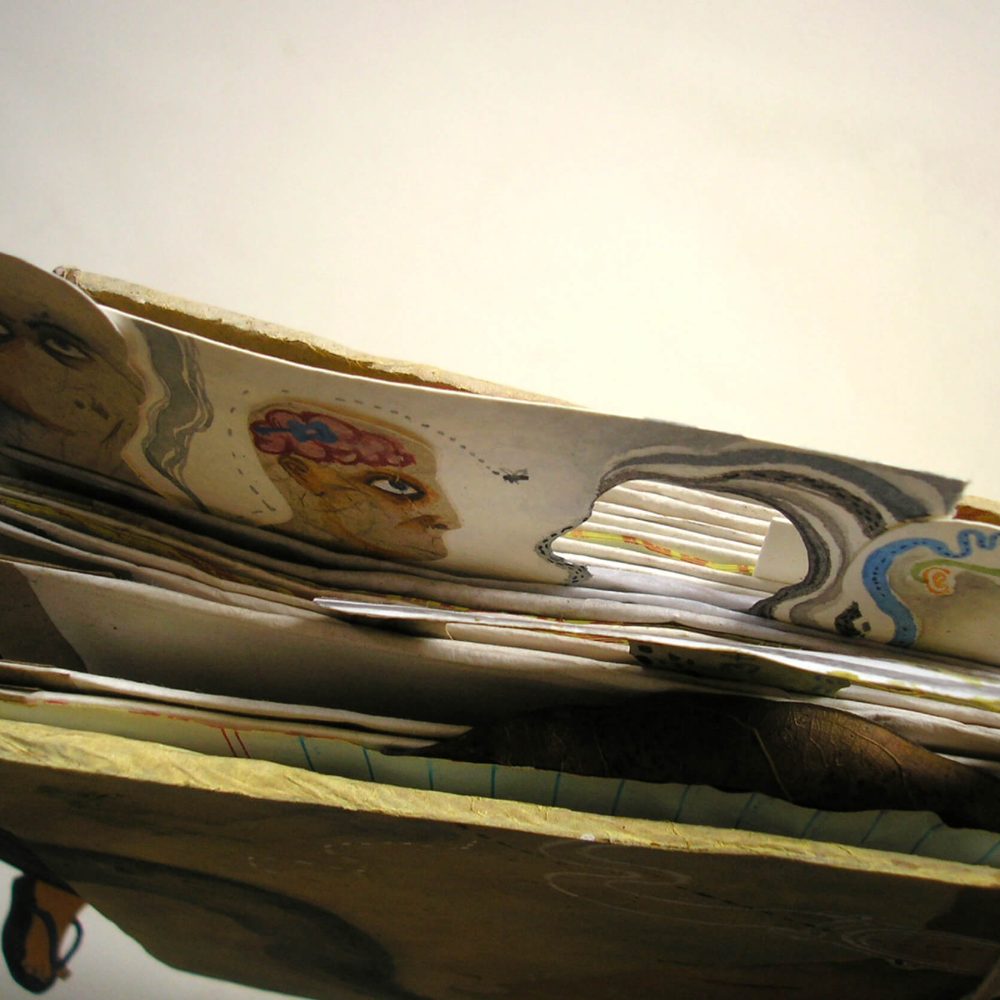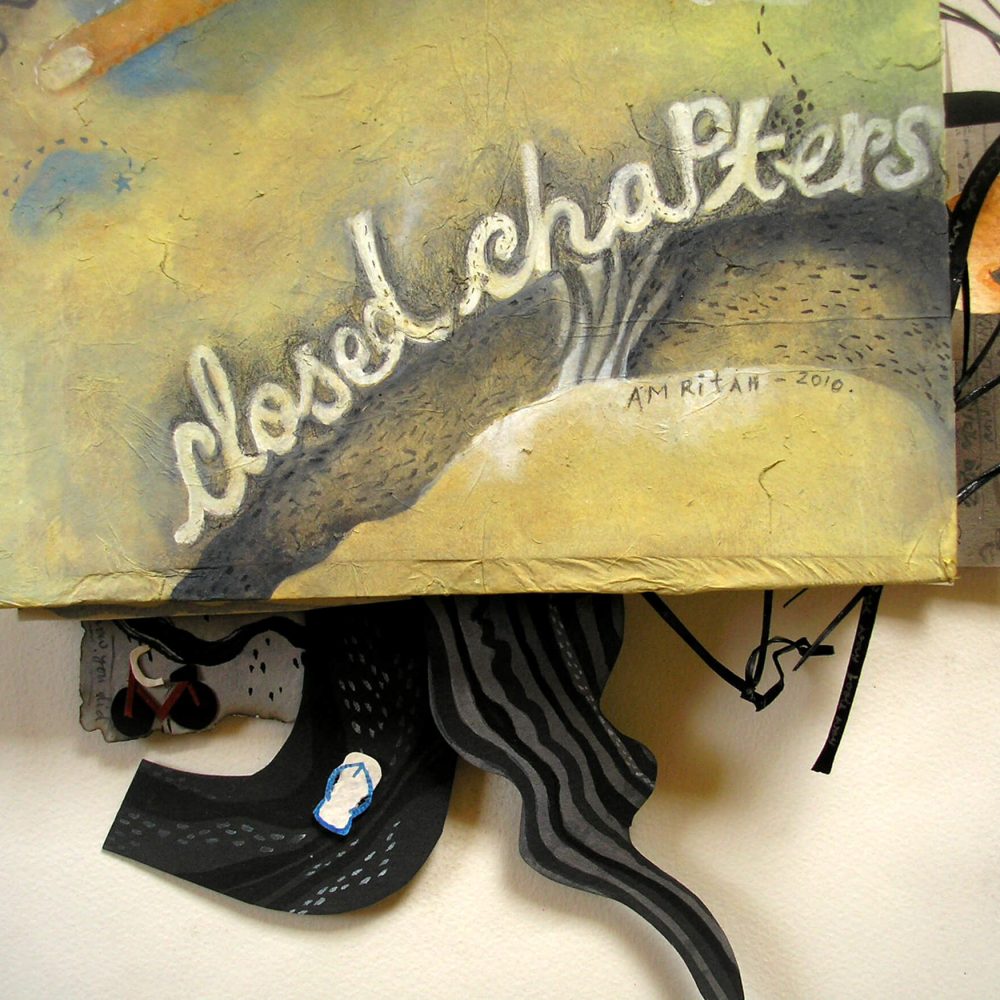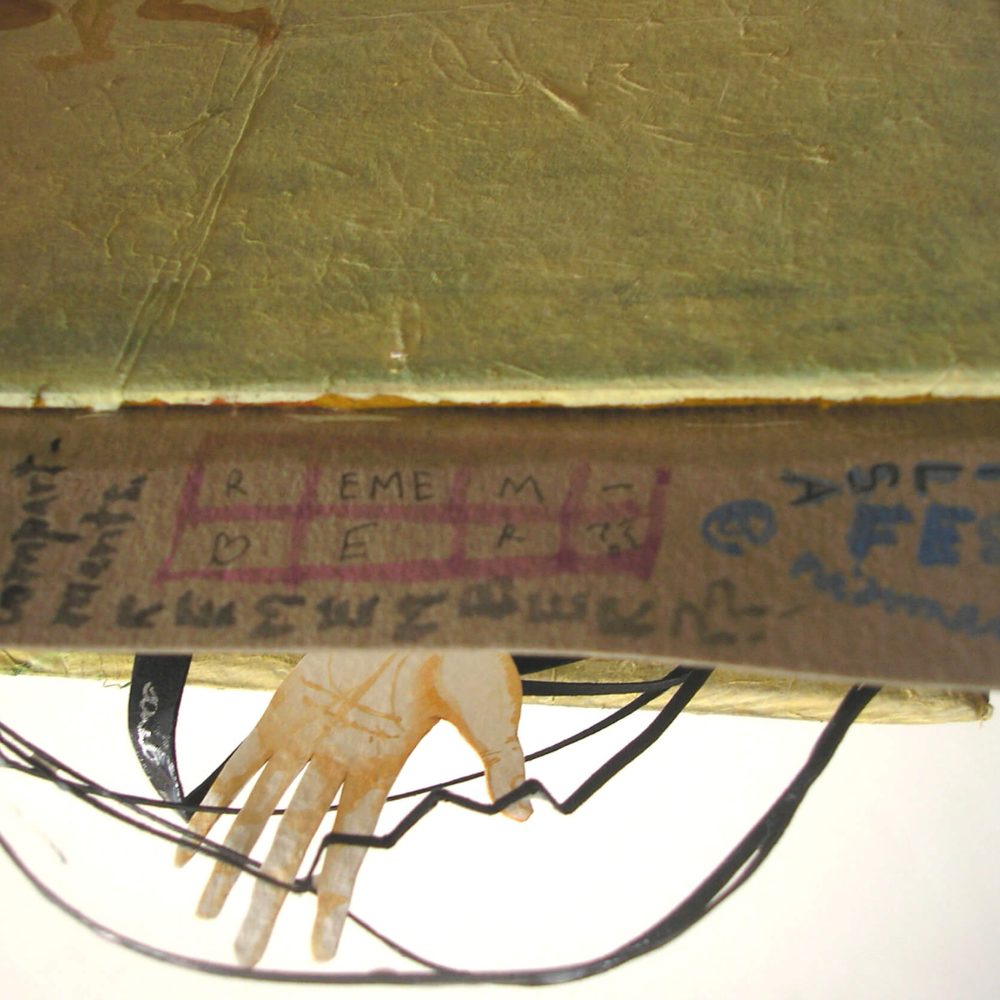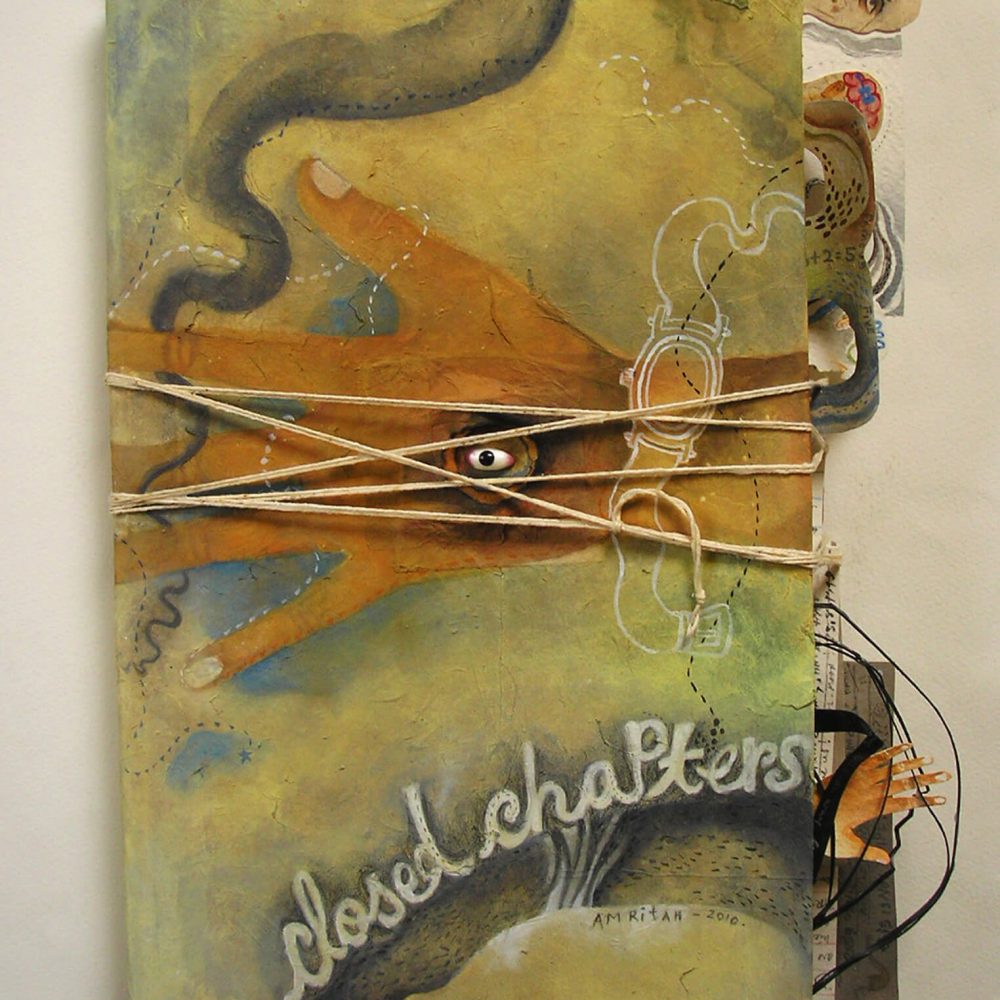DO YOU STILL HAPPEN?
AMRITAH SEN Nov-Dec 2010
Participating in the nooks and corners
The title of this show “Do you still happen?” has something very surreptitious about it. It demands an answer, knowing fully well that it can’t be answered. At best it can be wondered about. Eventually the title remains suspended like a frozen dewdrop. Yet, an anxiety creeps in along with a few feeble answers simplistically construed ostensibly to circumvent the moment of suspension. In affirmation or not, the answers, Amritah says, ‘often surprised me’. So are we. We too are surprised to see the way Amritah looks into this issue creating her delightful visual world with a startling dexterity and imagination.
Read MoreNeedless to say Amritah’s visual world is swarming with details. Strictly representational or not, they are animated to the extent that they become vocal, as it were, each having a thing to say. You tend to listen to what they tell as a story develops tentatively on the surface and body of the works. But the more you focus on the story, the more you are likely to loose sight of the details to find yourself on the edge of an idea rather than a story par se. Amritah locates her art in this enticing zone of ambiguity where the play between an assortment of alluring details and an evocation of ideas encourages a more subjective engagement on part of the viewers. At the same time, it provokes us to peep into the personal notations she discreetly embeds in her works yet keeping them largely concealed. Amritah crafts out this entire process meticulously. If her technical skill is an open book, her content is necessarily not. One feels like asking, what else is there in her secret diaries, or in those memory bags or in closed chapters? It is up to the viewers to imagine; after all, for Amritah it is imagination that feeds the nostalgia which many of these present works are steeped in.
I remember the way I had to change my pattern of interviewing an artist, once I visited Amritah’s studio. As she kept pulling out the works, one by one, from the closets of her studio, I felt nothing could be more ridiculous than trying to map the trajectory of these works by asking her to divulge some secret memo, as it were. So, I settled on to decipher myself the implications of these works laden with meaningful signs, well-crafted visual add-ons, fragments of writings lying like yet-to vaporize raindrops and traces of personal memories muttering to themselves. In between I did ask Amritah a few things, not exactly about her works but around them, thus building up another narrative truly informing the viewing in the process.
One gradually realizes that the present set of works by Amritah is less about decoding the tantalizing visual cryptogram she constructs and more about reading the script, both visually and literally, in terms of what they suggest. Almost all these works in the present show do evoke what memory, life and all its unfulfilled promises play at multiple layers with us. There are stories emerging both inside and outside us — and they keep exchanging their places vis-a-vis our perceptions. This could be acknowledged as one of the departure points of Amritah’s works — she plays back almost the same game in her works from every formal and conceptual plane.
It is also clear that she does make a distinction between an inside-story and an outside-story. It seems that she also makes it a point that the viewers be aware of the very presence of an inside-story even if they are not allowed to see it. A sense that Amritah is playing with her hidden or secret narrations pervades throughout her works. I told her, ‘this makes your visual/technical/formal play not only a fun but tricky as well. The hiddenness is not hidden at all. You have merely put them out of sight, leaving a note behind, as it were, saying you have things kept concealed. I think any conceptual discussion about this set of works is incomplete without considering this feature. ‘
Amritah responds by saying, ‘Yes, I do make a distinction between the ‘inner ‘and the ‘outer story’. Shouldn’t l? See, the artist and the viewer are two different individuals, so it’s natural that I’d like to know if a connection is made between the two. It is more necessary when the artist is making personal stuffs. As I told you before, for me, this particular set of works started on a very personal note. Thematically it gradually became wider, but that is a separate issue. The main theme of the whole set is ‘nostalgia ‘or ‘looking back’— and I was always checking out if/ was becoming too personal. I wanted to maintain that balance. So, it was natural for me to be curious about how a person would see these works from ‘outside’. And, I do have a sort of surface evolves gradually. At least for these works this is true. While doing them I felt I put my hand deep inside and picked up elements. I do agree with you that I have not exactly hidden the secrets, but here I have announced that they exist. Because it is this time, I realized that I carry secrets. So, I played with them. I told you earlier, the fun element was most important. It was like playing a hide-and-seek game. Whether you call it ‘fun ‘or a ‘trick’, it is surely the key point for these works
S.N.M: Keeping the character of this present show in mind, how would you distinguish your art as painting from your art as object?
A.S: My primary interest has been to play with viewpoints. I mean, I am dealing with many layers, or planes, and something that you have to see from different angles. In other words, this can also be termed as layers of narrations, interplay of different narrations at the same time.
(Amritah once said that she was obsessed with ‘playing with words’)
While I am working with the square paper format, this fun is limited in the layers of narration in a literal way. I was doing very high relief collages for quite a long time to include shadows as an obvious part of my work, which would add another ‘layer’ to the narration. This year while I was doing ‘Rain Pipes’— the set of seven collages— in the first work the relief reached an unexpected projection. I have not done this much high relief collages before. The art objects gave me the pleasure to make this fun physical, when you have to actually go around a work, or flip it to discover what is there inside. This opened up wide possibilities to explore the ‘narration’ itself.
S.N.M: Would you like to see this set of works as a gradual progression/evolution from the more conventional format to three dimensional objects?
A.S: From the very beginning of 2010, I was not really happy with my regular habits of picture making. I was desperately looking for more hidden nooks and corners in my works. The set of glass bottles titled “nothing is limited” was the first ‘object’ that I made. And I thoroughly enjoyed unobtrusive quality in them. I also got rid of the frontality; one can see them from any side. Then, the things inside are not glued, so if after sealing the bottle something accidentally changes its position — it is not thought-out. I enjoyed this uncertainty.
Then I was making the diaries, and playing with layers was a big excitement for me. They look like diaries or books, though they are not meant to be opened. They are objects that look like books. It is the surface or the covers that I intend the viewers to see. And the surface is not flat, one has to go around and look and peep. I was happy to imagine that I was making everyone curious about the inner content. That’s why they are called “secret diaries”— secrets are not to be shared!
The diaries have got pages, but that mainly is to create the bulk. You may call it ‘mental’, but in many pages I did scribbling and doodle though they cannot be seen.
It was more like a game that I played with myself. It was so engrossing that throughout the year I worked in a closed-door room with the things on my lap. Nothing else mattered to me at that point.
In fact, the entire set of works, for me, is more of a mind game than to be seen in technical aspect. Making more intricate and hidden layers was thematically important, which drove me to find out other ways of ‘art making’.
I see this development as a personal journey of my narratives.
It does not mean I will never go back to conventional paintings; I really don ‘t know— but for this time, playing with viewpoint was fun. I must admit that I felt excited and free — as if there are loads of things waiting for me to be tried out and tested.
S.N.M: Don’t you think that you are not only shifting in terms of format but also in terms of concept? I mean, the very fact that the Memory Bags do look like bags, Secret Diaries have assumed the very physical format of diaries — don’t you think that the formats of objects are statements as well?
A.S: Yes, the formats of objects here are indeed statements as well. For years I have used bottles in different versions to narrate different things. Using actual bottles containing things that I have spoken about earlier was an altogether new experience.
Once again, when the memory bags were made, the whole pattern of narration changed. My attitude towards a story changed thereafter. I was happy to transfer my sheets of drawing papers to bags or boxes, something that I’ve not done earlier.
S.N.M: I would like to know something from you about your meticulous insertions of texts in your work. Presence of the legible meaningful text endows your work with an obvious narrative character. It almost also hints at the possibility of reading a literal story; but the inherent visual nature of your works often suggests something else — it proposes a conceptual/psychological realm that is beyond narrative.
A.S: This time, this insertion of texts flooded my works. It happened on its own, and I let it happen. I wanted to see where I was heading to.
I think, my work has always been, to some extent, literal. May be, that was one reason, I thought, as I said above, that, my works are narratives. For me, text and visual— both have their own palpability, and both are extremely important to me. But I have not used text in this degree before — at least, not in recent past. I want people to read the texts. But, if they don’t, or skip a certain part of it is also fine. I see them as layers of narration. More closely you look at the work, or deeper you read the text, you “see” more. It isas simple as that.
What if we do not separate the text and the visual, and the things they are indicating, and take them as a whole?
It is true that one does feel enticed to recognize Amritah’s works as multi-layered experiences loaded with self-referent signs. There is of course a great temptation in reading her work as a speculative visual experience and thus enjoy the hiddenness and the allied underpinnings in a kind of visual-cerebral way. Looking at Amritah’s works one cannot resist imagining a kind of participation in the very thought process of these works. Nostalgia in Amritah’s works becomes infectious with its magnetic charm and enchanting unresolved tales.

